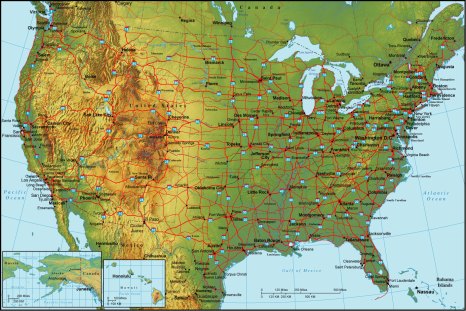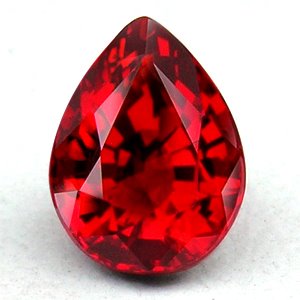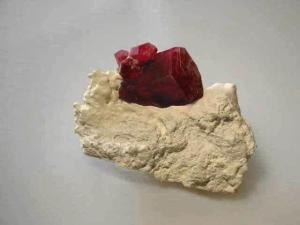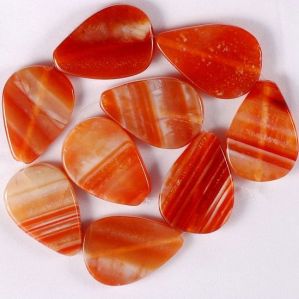01/01/2010 New The Twelve Stones of Revelation
©PLEASE NOTE THAT THIS IS INTELLECTUAL PROPERTY AND THIS IS COPYRIGHTED INFORMATION. USE OF THIS INFORMATION IN REPRODUCTION or ANY OTHER MANNER CONSTITUTES COPYRIGHT INFRINGEMENT AND IS A CRIME PUNISHABLE BY LAW. MATERIAL USED FOR EDUCATIONAL PURPOSES HAS BEEN LINKED TO THE WEBSITES OF THEIR VARIOUS OWNERS AND COPYRIGHTS REMAIN LINKED TO THOSE OWNERS AS WELL. IF YOU ARE THE OWNER OF ANY MATERIAL ON THIS SITE AND WOULD LIKE YOUR MATERIAL REMOVED, PLEASE CONTACT THE AUTHOR. NOTE THAT YOUR LINK TRAFFIC MAY/MAY NOT INCREASE AS A RESULT OF THESE EFFORTS AND THAT AN HONEST EFFORT TOWARD ACKNOWLEDGMENT OF THE MATERIAL USED HAS BEEN EXHAUSTED. THANK YOU IN ADVANCE FOR THE USE OF MATERIAL USED IN ORDER TO EDUCATE PERSONS WORLD-WIDE.©
THE TWELVE STONES OF REVELATION AND THE NEW CITY:
Personal Note***:
Please note that the information listed is derived from many sources and research of the stones is ongoing until this journal is published. It is difficult to use information of our current times when in biblical times that information may have been different.
Stones will be covered in many ways including, but not limited to geology, elemental, value, color, spiritual, ancient and modern times if applicable. Areas where the bulk of these stones are mined will also be covered. Through the beauty of these gems, we will also see the beauty of people.
People, their cultures and other important information about the regions of the world will tie together not only the gemstones, but a suprising and true revelation discovered in The Book of Revelation that will create a change in the way we see Revelation!
Every effort has been made to provide accurate information about these gemstones. LINKS FOR ALL INFORMATION AND PHOTOS WILL BE POSTED TO CREDIT THEIR RESPECTIVE OWNERS either under/above the photo or by clicking it. Information is obtained for educative purposes on gems, people, cultures, truth, current events, and more.
If you are the owner of any image and prefer it be removed, and not linked back to your personal website, company, or institution, please contact the artist through the www.therevelationpainting.com website. Thank you in advance for you support in this important endeavor.
STONES OF THE REVELATION PAINTING’S NEW CITY
-
JASPER
-
SAPPHIRE
-
CHALCEDONY
-
EMERALD
-
SARDONYX
-
SARDIUS
-
CHRYSOLITE
-
BERYL
-
TOPAZ
-
CHRYSOPRASUS
-
JACINTH
-
AMETHYST
***Disclosure: Please note that some of the images contained in this educative material may not be suitable for young viewers and discretion is advised.
Tags: africa, america, AMETHYST, Amsterdam, ancient, asia, Athens, Auckland, australia, Bangkok, beautiful, beauty, Beijing, bible, biblical, birthdays, Bixbite, blue, brazil, Budapest, Caracas, CHALCEDONY, china, CHRYSOLITE, chrysoprase, CHRYSOPRASUS, color, colors, crushed, culture, cut, denmark, Dublin, egypt, EMERALD, emeralds, endeavor, facet, Frankfurt, gems, gemstone, gemstones, geology, germany, gold, green, helidor, Hong Kong, indigo, iraq, Istanbul, JACINTH, Jakarta, JASPER, lebanon, Lisbon, love, mexico, Mexico City, mystery, native, natives, orange, Prague, purple, quartz, rarest gem, rarest gemstone, red, red emerald, red sapphire, regions, revelation, revelations, Rome, rubies, russia, Santiago Singapore, SAPPHIRE, São Paulo, Shanghai, south america, spain, sparkle, spiritual, sri Lanka, Stockholm, stones, Sydney, Taipei, teal, Tokyo, TOPAZ, tribal, tribes, valuable, Vienna, Warsaw, weddings, world, yellow, zircon, Zurich
- 3 comments
- Posted under Uncategorized
01/01/2010 JASPER-The First Foundation Stone
JASPER
-a quartz as “clear as crystal”
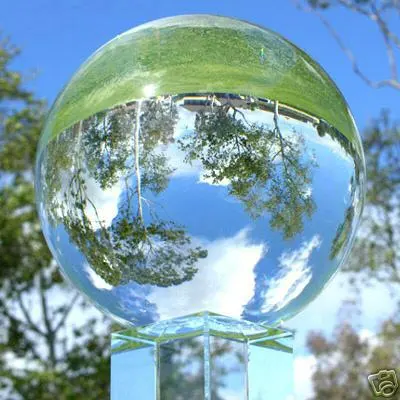
JASPER
THE FIRST FOUNDATION OF THE NEW CITY-SCENE VII
Personal Note:
Please note that the information listed is derived from many sources and research regarding the stones is ongoing. It is difficult to use information of our current times when in biblical times that information may have been different (note the post regarding Emeralds when it is posted).
Obtaining the stones for the New City was my first endeavor when initiating supplies needed for the painting. I focused on the “bible” names and nothing more. When I began soliciting for and collecting stones from all over the world, I took their literal “bible” meaning. Jasper is an excellent example of the confusion and controversy I began to face.
Jasper is noted to be mainly reds and browns most commonly. There are banded and spotted in nearly all colors. I imagined the stone used was red, perhaps banded with browns, blacks and yellow/whites as it was the most commonly seen stone with research. There were blues (ocean jasper) which were magnificent but rare. I wondered if the blue was the correct stone to use in order to illuminate the heavenly blue colors of God’s New City.
It was not until several years later I realized my error! I had been collecting the wrong color all along. I had read Revelation so many times and missed what I now understand jasper to be. I began to research the stones from ancient times, scientifically, geologically, metaphysically and any way to develop a true understanding of exactly what each stone signifies.
As I have previously stated: “I am not religious but I am learning”, and in that growth I tried to walk a mile in another “man’s” shoes to find out exactly what was on God’s mind when he mastered the architecture of his New City. I imagine the plan was to mark HIS New City with HIS glory which SHINES like the sun. What a better stone to use to crown HIS glory!
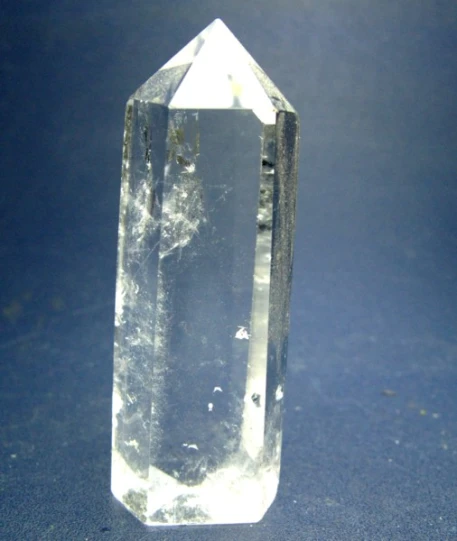
Referring to God and The New City from various biblical text:
-
Rev. 4:3 And he that sat was to the sight like the jasper and sardine stone
-
Rev. 4:6 …and before the throne there was something like a sea of glass, like crystal…
-
Rev. 21:11 Having the glory of God, and the light thereof was like to a precious stone, as to the jasper stone, even as crystal… (SECOND TRANSLATION: …having the glory of God. … brilliance was like a very costly stone of crystal-clear jasper.)
-
Rev. 21:23 And the city hath no need of the sun, nor of the moon to shine in it. For the glory of God hath enlightened it, and the Lamb is the lamp thereof.
FACTS REGARDING JASPER:
-
Quartz is divided into two types:
-
Macrocrystalline-Crystals are visible with the unaided eye.
-
Cryptocrystalline-A microscope is required to see the individual crystals.
-
Jasper is quartz of the cryptocrystalline type that can be of two distinct types; micro granular and fibrous.
-
Quartz makes up 12% of the earth’s crust. (ODDLY ABUNDANT-REMEMBER THAT WHEN READING ABOUT THE STONES IN VARIOUS BLOGS. A MYSTERY OF REVELATION WILL BE REVEALED IN THE BLOG SHORTLY BEFORE THE PAINTING IS UNVEILED 12/2010 WHICH WILL CHANGE HISTORY~!)
-
As the most abundant mineral on earth, quartz and jasper are found all over the world.
-
Jasper is often multicolored, banded or spotted and is commonly found in reds and browns.
-
Has long been used as tools for hardness; spears and axes.
-
Helps cure liver, intestinal ailments, stomach, gynecological, and cleanse the body of toxins.
-
The stone was once believed to cure insanity with God’s help, and heal demon possessed.
-
Egyptians placed amulets on the deceased as jasper was believed to create a safe passage in death.
-
Protective, calming, offers stability, and balances the emotional and intellectual.
-
Known as “the great rain bearer” in the fourth century.
-
Origin of the name Jasper is Greek: iaspis.
-
Brings happiness, aids in sleep, protective properties.
Major sources of Jasper include:
Venezuela, Germany, North Africa, Brazil, Canada, United States, Madagascar, Russia, Ural Mountains, India, Sicily, France, Egypt, Uruguay, Australia, Kazakhstan
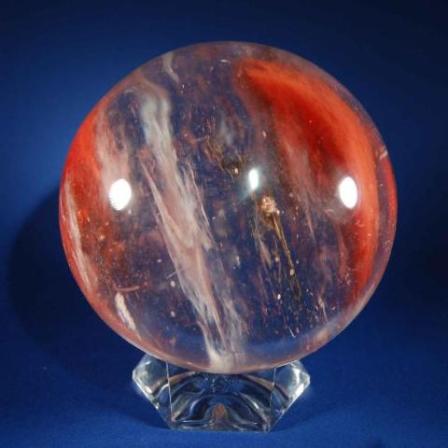
As the stones are found nearly all over the world, sometimes we do not see the world, the people and only value the worth of the stones. Learning about different people and cultures not only creates a “worldly or cultured person”, it also creates a deeper understanding of life, the people in it, promotes unity, and makes the world an overall better place to live.
Venezuela

The Culture of Venezuela is product of a very rich and diverse set of cultural traditions. A sort of melting pot culture has been created by wide influences, from the original American Indians to the Spanish and Africans who arrived after the Spanish conquest. Then 19th century and 20th century immigration brought many Italians, Portuguese, Arabs, Germans, and others from the bordering countries of South America. About 85% of Venezuelans live in urban areas in the northern part of the country. Although almost half of the land area is south of the Orinoco River, only 5% of the population live in that area. About 95% of the population call themselves Roman Catholic. The rest belong to other churches, mainly the Protestant church. Read more at: http://en.wikipedia.org/wiki/Culture_of_Venezuela

http://www.venezuelanalysis.com/news/1784
VENEZUELA
History and Culture
In ancient times, Venezuela was paradise for the Indians who lived on its beaches, in its tropical forests, and on the gentle grassland of the llanos. There were three main groups: the Carib, Arawak, and the Chibcha. They lived in small groups and all of them practiced some degree of farming; the land, however, was bountiful enough so that this was not always a necessity. They could easily hunt, fish for, and gather their food. The most advanced of the three were the Chibcha who lived on the eastern slopes of the Andes. Though they never developed large cities, their agricultural skill were formidable: they terraced parts of the Andes and built sophisticated irrigation channels to water their crops.
llanos. There were three main groups: the Carib, Arawak, and the Chibcha. They lived in small groups and all of them practiced some degree of farming; the land, however, was bountiful enough so that this was not always a necessity. They could easily hunt, fish for, and gather their food. The most advanced of the three were the Chibcha who lived on the eastern slopes of the Andes. Though they never developed large cities, their agricultural skill were formidable: they terraced parts of the Andes and built sophisticated irrigation channels to water their crops.
Christopher Columbus was the first European to visit Venezuela. He came in 1498 during his third voyage to the New World, and landed on the Peninsula de Paria. Following the coast, he explored the Rio Orinoco Delta and concluded that he had found much more than another Caribbean island. More explorers came a year later, and it was Alonso de Ojeda who gave the country its name. Arriving at Lake Maracaibo, he admired the stilted houses that the Indians had build above the lake and called the place Venezuela – “Little Venice.” A year after that the Spanish established their first settlement, Nueva Cadiz, which was later destroyed by a tsunami. Early colonization in Venezuela was much less rampant than it was in other parts of South America, and the colony was ruled with a loose hand from Bogota. It was much less important to the Spanish than the mineral-producing colonies of Western South America, but Venezuela would later surprise the world when massive oil reserves would be discovered.
Venezuela may have been a quiet outpost on the edge of the Spanish Empire, but it gave birth to the man who would one day turn that empire on its head: Simon Bolivar. With the help of British mercenaries, Bolivar and his followers campaigned against the Spanish tirelessly, marching across the Andes and liberating Colombia in 1819, Venezuela in 1821, and Ecuador, Peru, and Bolivia in 1825. Much of his army was composed of native Venezuelans. Independence did not prove easy for the new nation. Civil strife, wars, and dictatorships raged in the country well into the next century. Though some dictators sought real reform, most milked their positions for personal gain. Border disputes with the British colony of Guyana erupted in the 1840s, and although they never boiled over into full-fledged warfare, Venezuela still disputes the border to this day.
mercenaries, Bolivar and his followers campaigned against the Spanish tirelessly, marching across the Andes and liberating Colombia in 1819, Venezuela in 1821, and Ecuador, Peru, and Bolivia in 1825. Much of his army was composed of native Venezuelans. Independence did not prove easy for the new nation. Civil strife, wars, and dictatorships raged in the country well into the next century. Though some dictators sought real reform, most milked their positions for personal gain. Border disputes with the British colony of Guyana erupted in the 1840s, and although they never boiled over into full-fledged warfare, Venezuela still disputes the border to this day.
In the early 1900s, the conflict-ridden nation finally began to get on its economic feet with the discovery of oil, and by the 20s Venezuela was beginning to reap the benefits. Unfortunately, most of the wealth remained with the ruling class, and the plague of dictators continued until 1947 when Romulo Betancourt led a popular revolt and rewrote the constitution. The first president-elect in Venezuela’s history took office the same year, the novelist Romulo Gallegos. Unfortunately, he was ousted by another dictator and the country did not experience a non-violent presidential succession until 1963. For the next 25 years, things went comparatively well. An oil boom in the mid-1970s saw enormous wealth pour into the country, though, as always, the vast lower class benefited little. Oil prices dropped in the late 80s and once again the country was thrown into crisis. Riots swept through Caracas and were violently repressed, and two coup attempts took place in 1992. Right now, the nation’s stability and future are uncertain.
 Despite a rough history, Venezuelans are infamous in South America for their easy-going nature and fun-loving spirit. Their national mythology hails back to the days when independent and rugged settlers tamed the lawlessness of the llanos, a heritage not unlike that of the American West. Most Venezuelans them come from a mix of European, Indian, and African roots, while a minority are exclusively white, black, or Indian. Roman Catholicism is the overwhelmingly dominant religion.
Despite a rough history, Venezuelans are infamous in South America for their easy-going nature and fun-loving spirit. Their national mythology hails back to the days when independent and rugged settlers tamed the lawlessness of the llanos, a heritage not unlike that of the American West. Most Venezuelans them come from a mix of European, Indian, and African roots, while a minority are exclusively white, black, or Indian. Roman Catholicism is the overwhelmingly dominant religion.
http://www.geographia.com/Venezuela/index.htm
http://www.geographia.com/indx05.htm For more information regarding Latin America. As much a Caribbean country as it is a South American anchor, Venezuela is unique. At night, the capital of Caracas comes to life with the rhythms of the Caribbean. The nation also has a few geographical superlatives, including the world’s highest waterfall and South America’s biggest lake.
Germany

It is the world’s largest beer festival, is held annually in Munich, Germany, has spread across Europe and the Rest of the World and is now celebrated globally. The Oktoberfest tradition started in 1810 to celebrate the October 12th marriage of Bavarian Crown Prince Ludwig to the Saxon-Hildburghausen Princess Therese. All of the residents of Munich were invited to celebrate the marriage in the surrounding fields. The celebrations lasted five days and ended with a horse race.

Federal Republic of Germany (German: Bundesrepublik Deutschland, is a country in Central Europe. It is bordered to the north by the North Sea, Denmark, and the Baltic Sea; to the east by Poland and the Czech Republic; to the south by Austria and Switzerland; and to the west by France, Luxembourg, Belgium, and the Netherlands. The territory of Germany covers 357,021 square kilometers (137,847 sq mi) and is influenced by a temperate seasonal climate. With 81.8 million inhabitants in January 2010, it has the largest population among member states of the European Union, and it is also home to the third-largest number of international migrants worldwide. More information: http://en.wikipedia.org/wiki/Germany

Population: 81,338,000 (July 1995 estimate) with growth rate of 0.26 percent (July 1995 estimate).
Ethnic Groups: 95.1 percent German, 2.3 percent Turkish, 1.7 percent Italian, 0.4 percent Greek, and 0.4 percent Polish; remainder mainly refugees from former Yugoslavia.
Languages: Standard German, with substantial differences in regional dialects. Three very small linguistic minorities, which speak Serbian, Danish, or Frisian.
North Africa
North Africa or Northern Africa is the northernmost region of the African continent, linked by the Sahara to Sub-Saharan Africa. Geopolitically, the UN definition of Northern Africa includes the following seven countries or territories; Algeria, Egypt, Libya, Morocco, Sudan, Tunisia, and Western Sahara.
The Spanish plazas de soberanía (exclaves) are on the southern coast of the Mediterranean Sea, surrounded by Morocco on land….The distinction between Northern Africa and the rest of Africa is historically significant because of the effective barrier created by the Sahara. Throughout history this barrier has culturally separated the North from the rest of Africa and, as the seafaring civilizations of the Phoenecians, Greeks, Romans and others facilitated communication and migration across the Mediterranean, the cultures of North Africa became much more closely tied to Southwestern Asia and Europe than Sub-Saharan Africa.
The inhabitants of North Africa are generally divided in a manner roughly corresponding to the principal geographic regions of North Africa: the Maghreb, the Nile Valley, and the Sahara. Northwest Africa on the whole is believed to have been inhabited by Berbers since before the beginning of recorded history, while the eastern part of North Africa has been home to the Egyptians. Ancient Egyptians record extensive contact in their Western desert with peoples that appear to have been Berber or proto-Berber.
CARTHAGENIAN FLANK STEAK
How North African can you get?
INGREDIENTS:
1 cup onion, finely chopped
1 tablespoon chopped garlic
1/2 cup olive oil
1/2 cup lemon juice
2 tablespoons soy sauce
1 tablespoon dry sherry
1/4 cup fresh oregano
2 teaspoons hot sauce
1 teaspoon tumeric
1 teaspoon dried marjoram
Salt and pepper
1 (2-pound) flank steakSet a jumbo zip lock bag in a large glass measure. Combine all the ingredients in the plastic bag. Score the flank steak and place in the bag. Seal the bag and chill. Marinate at least 20 minutes and up to overnight.
Heat a grill or grill pan. Remove the flank steak from the bag and pat dry. Grill 4 to 5 minutes per side. Let rest 5 to 10 minutes before carving. Serves 4
For more about food: http://www.thegutsygourmet.net/africa.html

http://allafrica.com/
FRANCE
 http://fr.mapsofworld.com/france/
http://fr.mapsofworld.com/france/

France, the second largest country in Europe, is known for its rich and varied culture. France has the English Channel to its north and the Mediterranean Sea and the Bay of Biscay to its south. The country is hexagonal in shape and is surrounded by Italy, Spain, Belgium, Andorra and Switzerland.
The culture of France has evolved through various centuries, and what we see today, is the amalgamation of the cultures of various ancient civilizations. These include the Greeks, Celtics, Romans, etc. The culture of this country is influenced by the neighboring countries, and also by various historical events that took place. France has in turn contributed in the development of cultures of other nations in the areas of fashion, modern art and cinema.
Language
French is the official and most widely spoken language of France. People of France consider French as the most important part of their cultural identity. French is also a popular language in other parts of the world. It also possesses 75 different regional languages like Flemish, Italian, Basque, Breton, Catalan, Occitan dialects, etc. Among these, the Catalan dialect is a largely spoken regional language, and is found in the French Pyrenees. The Constitution of France recognizes all these regional languages and are even taught in schools as a second language, in the areas where they are spoken.
Religion
Christianity (catholicism), is the religion followed by majority of people in France. However, it is not the only religion, and France is tolerant towards different religions as people from various religious and ethnic backgrounds live in France. This secular country has people following religions like Islam, Buddhism and Judaism. Protestantism is also followed by some of them.
Arts and Literature
France is considered as the hub of arts and literature. The artistic side of the French can be seen in paintings of the ancient as well as modern times. Every century has gifted France with invaluable painters and artists who have contributed tremendously to the artistic culture of France. It is said to be the home of many renowned artists like Edgar Degas, Claude Monet, Pierre-Auguste, etc. The artistic richness of France is exhibited in various museums of France like Louvre, Picasso and Osray Museum.
France has also contributed incredibly to world literature. Famous French authors and poets who have made their mark in the field of literature are Victor Hugo, Jean Paul Sartre, Moliere, etc.

http://portal.unesco.org/culture/en/ev.php-URL_ID=36513&URL_DO=DO_TOPIC&URL_SECTION=201.html
Architecture
France is renowned for its beautiful and extraordinary monuments. Every age has contributed to the development of exquisite churches and palaces that are a pride of this country. France has monuments influenced by Roman, Gothic and Italian architecture. Some of the monuments that are the main attraction, for tourists who visit France, are the Eiffel Tower, Palace of Versailles, etc.
http://www.buzzle.com/articles/culture-of-france.html

http://www.travelfranceplus.com/sacre-cceur.html
Cuisine
The people of France are known for their love for food and French cheese, and wines are popular all over the world. The dishes and style of cooking are different in different parts of the country. The French love good food, and are very particular about preparation and also about the dining etiquettes. French cooking style and food has been adopted by many Western countries, in recent times.

http://www.europe-cities.com/en/648/france/culture/
Social Culture
The French are quite liberal, but attach great importance to family values and culture. The extended family system has evolved into smaller, nuclear families. They are polite by nature and truly value friendships and relationships.
People of France are quite stylish and fashionable. It is the center of fashion industry, and Paris, the capital of France, is said to be the fashion capital of the world. The French are said to be wealthy, and love to lead a luxurious lifestyle.
People in France share a strong cultural identity, in spite of the fact that many come from different ethnic and religious background. Though, westernization has affected France, people of the country are proud of their culture and strive towards preserving it.
EGYPT
Jasper is often multicolored, banded or spotted and is commonly found in reds and browns.
Has long been used as tools for hardness; spears and axes.
Helps cure liver, intestinal ailments, stomach, gynecological, and cleanse the body of toxins.
The stone was once believed to cure insanity with God’s help, and heal demon possessed.
Egyptians placed amulets on the deceased as jasper was believed to create a safe passage in death.
Protective, calming, offers stability, and balances the emotional and intellectual.
Known as “the great rain bearer” in the fourth century.
Origin of the name Jasper is Greek: iaspis.
Brings happiness, aids in sleep, protective properties.



History and Culture
 llanos. There were three main groups: the Carib, Arawak, and the Chibcha. They lived in small groups and all of them practiced some degree of farming; the land, however, was bountiful enough so that this was not always a necessity. They could easily hunt, fish for, and gather their food. The most advanced of the three were the Chibcha who lived on the eastern slopes of the Andes. Though they never developed large cities, their agricultural skill were formidable: they terraced parts of the Andes and built sophisticated irrigation channels to water their crops.
llanos. There were three main groups: the Carib, Arawak, and the Chibcha. They lived in small groups and all of them practiced some degree of farming; the land, however, was bountiful enough so that this was not always a necessity. They could easily hunt, fish for, and gather their food. The most advanced of the three were the Chibcha who lived on the eastern slopes of the Andes. Though they never developed large cities, their agricultural skill were formidable: they terraced parts of the Andes and built sophisticated irrigation channels to water their crops. mercenaries, Bolivar and his followers campaigned against the Spanish tirelessly, marching across the Andes and liberating Colombia in 1819, Venezuela in 1821, and Ecuador, Peru, and Bolivia in 1825. Much of his army was composed of native Venezuelans. Independence did not prove easy for the new nation. Civil strife, wars, and dictatorships raged in the country well into the next century. Though some dictators sought real reform, most milked their positions for personal gain. Border disputes with the British colony of Guyana erupted in the 1840s, and although they never boiled over into full-fledged warfare, Venezuela still disputes the border to this day.
mercenaries, Bolivar and his followers campaigned against the Spanish tirelessly, marching across the Andes and liberating Colombia in 1819, Venezuela in 1821, and Ecuador, Peru, and Bolivia in 1825. Much of his army was composed of native Venezuelans. Independence did not prove easy for the new nation. Civil strife, wars, and dictatorships raged in the country well into the next century. Though some dictators sought real reform, most milked their positions for personal gain. Border disputes with the British colony of Guyana erupted in the 1840s, and although they never boiled over into full-fledged warfare, Venezuela still disputes the border to this day. Despite a rough history, Venezuelans are infamous in South America for their easy-going nature and fun-loving spirit. Their national mythology hails back to the days when independent and rugged settlers tamed the lawlessness of the llanos, a heritage not unlike that of the American West. Most Venezuelans them come from a mix of European, Indian, and African roots, while a minority are exclusively white, black, or Indian. Roman Catholicism is the overwhelmingly dominant religion.
Despite a rough history, Venezuelans are infamous in South America for their easy-going nature and fun-loving spirit. Their national mythology hails back to the days when independent and rugged settlers tamed the lawlessness of the llanos, a heritage not unlike that of the American West. Most Venezuelans them come from a mix of European, Indian, and African roots, while a minority are exclusively white, black, or Indian. Roman Catholicism is the overwhelmingly dominant religion.


1 cup onion, finely chopped
1 tablespoon chopped garlic
1/2 cup olive oil
1/2 cup lemon juice
2 tablespoons soy sauce
1 tablespoon dry sherry
1/4 cup fresh oregano
2 teaspoons hot sauce
1 teaspoon tumeric
1 teaspoon dried marjoram
Salt and pepper
1 (2-pound) flank steakSet a jumbo zip lock bag in a large glass measure. Combine all the ingredients in the plastic bag. Score the flank steak and place in the bag. Seal the bag and chill. Marinate at least 20 minutes and up to overnight.
FRANCE
 http://fr.mapsofworld.com/france/
http://fr.mapsofworld.com/france/
French is the official and most widely spoken language of France. People of France consider French as the most important part of their cultural identity. French is also a popular language in other parts of the world. It also possesses 75 different regional languages like Flemish, Italian, Basque, Breton, Catalan, Occitan dialects, etc. Among these, the Catalan dialect is a largely spoken regional language, and is found in the French Pyrenees. The Constitution of France recognizes all these regional languages and are even taught in schools as a second language, in the areas where they are spoken.
Christianity (catholicism), is the religion followed by majority of people in France. However, it is not the only religion, and France is tolerant towards different religions as people from various religious and ethnic backgrounds live in France. This secular country has people following religions like Islam, Buddhism and Judaism. Protestantism is also followed by some of them.
France is considered as the hub of arts and literature. The artistic side of the French can be seen in paintings of the ancient as well as modern times. Every century has gifted France with invaluable painters and artists who have contributed tremendously to the artistic culture of France. It is said to be the home of many renowned artists like Edgar Degas, Claude Monet, Pierre-Auguste, etc. The artistic richness of France is exhibited in various museums of France like Louvre, Picasso and Osray Museum.

France is renowned for its beautiful and extraordinary monuments. Every age has contributed to the development of exquisite churches and palaces that are a pride of this country. France has monuments influenced by Roman, Gothic and Italian architecture. Some of the monuments that are the main attraction, for tourists who visit France, are the Eiffel Tower, Palace of Versailles, etc.

The people of France are known for their love for food and French cheese, and wines are popular all over the world. The dishes and style of cooking are different in different parts of the country. The French love good food, and are very particular about preparation and also about the dining etiquettes. French cooking style and food has been adopted by many Western countries, in recent times.

The French are quite liberal, but attach great importance to family values and culture. The extended family system has evolved into smaller, nuclear families. They are polite by nature and truly value friendships and relationships.

http://www.wordtravels.com/Travelguide/Countries/Egypt/Map
Officially the Arab Republic of Egypt, is a country mainly in North Africa, with the Sinai Peninsula forming a land bridge in Southwest Asia. Thereby, Egypt is a transcontinental country, and is considered to be a major power in North Africa, Mediterranean Region, African continent, Nile Basin, Islamic World and the Red Sea. Covering an area of about 1,010,000 square kilometers (390,000 sq mi), Egypt is bordered by the Mediterranean Sea to the north, the Gaza Strip and Israel to the northeast, the Red Sea to the east, Sudan to the south and Libya to the west.
Egypt is one of the most populous countries in Africa and the Middle East. The great majority of its estimated 77.4 million live near the banks of the Nile River, in an area of about 40,000 square kilometers (15,000 sq mi), where the only arable agricultural land is found. The large areas of the Sahara Desert are sparsely inhabited. About half of Egypt’s residents live in urban areas, with most spread across the densely populated centres of greater Cairo, Alexandria and other major cities in the Nile Delta.
Egypt is famous for its ancient civilization and some of the world’s most famous monuments, including the Giza pyramid complex and its Great Sphinx. The southern city of Luxor contains many ancient artifacts, such as the Karnak Temple and the Valley of the Kings. Egypt is widely regarded as an important political and cultural nation of the Middle East.
Egypt possesses one of the most developed and diversified economies in the Middle East, with sectors such as tourism, agriculture, industry and service at almost equal rates in national production. Consequently, the Egyptian economy is rapidly developing, due in part to legislation aimed at luring investments, coupled with both internal and political stability, along with recent trade and market liberalization.
http://en.wikipedia.org/wiki/Egypt
Ancient Egypt was an ancient civilization of eastern North Africa, concentrated along the lower reaches of the Nile River in what is now the modern country of Egypt. The civilization coalesced around 3150 BC with the political unification of Upper and Lower Egypt under the first pharaoh, and it developed over the next three millennia. Its history occurred in a series of stable Kingdoms, separated by periods of relative instability known as Intermediate Periods. Ancient Egypt reached its pinnacle during the New Kingdom, after which it entered a period of slow decline. Egypt was conquered by a succession of foreign powers in this late period, and the rule of the pharaohs officially ended in 31 BC when the early Roman Empire conquered Egypt and made it a province.
The success of ancient Egyptian civilization stemmed partly from its ability to adapt to the conditions of the Nile River Valley. The predictable flooding and controlled irrigation of the fertile valley produced surplus crops, which fueled social development and culture. With resources to spare, the administration sponsored mineral exploitation of the valley and surrounding desert regions, the early development of an independent writing system, the organization of collective construction and agricultural projects, trade with surrounding regions, and a military intended to defeat foreign enemies and assert Egyptian dominance. Motivating and organizing these activities was a bureaucracy of elite scribes, religious leaders, and administrators under the control of a pharaoh who ensured the cooperation and unity of the Egyptian people in the context of an elaborate system of religious beliefs.
The many achievements of the ancient Egyptians include the quarrying, surveying and construction techniques that facilitated the building of monumental pyramids, temples, and obelisks; a system of mathematics, a practical and effective system of medicine, irrigation systems and agricultural production techniques, the first known ships, Egyptian faience and glass technology, new forms of literature, and the earliest known peace treaty. Egypt left a lasting legacy. Its art and architecture were widely copied, and its antiquities carried off to far corners of the world. Its monumental ruins have inspired the imaginations of travellers and writers for centuries. A newfound respect for antiquities and excavations in the early modern period led to the scientific investigation of Egyptian civilization and a greater appreciation of its cultural legacy, for Egypt and the world.
http://en.wikipedia.org/wiki/Ancient_egypt

The People, The Culture…Modern Egypt
http://en.wikipedia.org/wiki/File:Egypt.Giza.Sphinx.02.jpg

The Culture of Egypt has six thousand years of recorded history. Ancient Egypt was among the earliest civilizations. For millennia, Egypt maintained a strikingly complex and stable culture that influenced later cultures of Europe, the Middle East and Africa. After the Pharaonic era, Egypt itself came under the influence of Hellenism, for a time Christianity, and later, Arab and Islamic culture. Today, many aspects of Egypt’s ancient culture exist in interaction with newer elements, including the influence of modern Western culture.

http://www.hejleh.com/countries/egypt.html
Sicily
 http://goeurope.about.com/od/sicily/l/bl_sicily_map.htm http://goeurope.about.com/od/sicily/l/bl_sicily_map.htm
Sicily is a popular Italy travel destination with a volcano, beaches, mountains, and centuries of history and tradition. You can explore Mount Etna, swim in the sea, or visit Phoenician settlements, Punic cities, Roman amphitheaters, Greek temples, Norman castles and Aragonese churches all on the Italian island of Sicily.
http://goeurope.about.com/od/sicily/l/bl_sicily_map.htm http://goeurope.about.com/od/sicily/l/bl_sicily_map.htm
Sicily is a popular Italy travel destination with a volcano, beaches, mountains, and centuries of history and tradition. You can explore Mount Etna, swim in the sea, or visit Phoenician settlements, Punic cities, Roman amphitheaters, Greek temples, Norman castles and Aragonese churches all on the Italian island of Sicily.

Officially the Arab Republic of Egypt, is a country mainly in North Africa, with the Sinai Peninsula forming a land bridge in Southwest Asia. Thereby, Egypt is a transcontinental country, and is considered to be a major power in North Africa, Mediterranean Region, African continent, Nile Basin, Islamic World and the Red Sea. Covering an area of about 1,010,000 square kilometers (390,000 sq mi), Egypt is bordered by the Mediterranean Sea to the north, the Gaza Strip and Israel to the northeast, the Red Sea to the east, Sudan to the south and Libya to the west.
Egypt is one of the most populous countries in Africa and the Middle East. The great majority of its estimated 77.4 million live near the banks of the Nile River, in an area of about 40,000 square kilometers (15,000 sq mi), where the only arable agricultural land is found. The large areas of the Sahara Desert are sparsely inhabited. About half of Egypt’s residents live in urban areas, with most spread across the densely populated centres of greater Cairo, Alexandria and other major cities in the Nile Delta.
Egypt is famous for its ancient civilization and some of the world’s most famous monuments, including the Giza pyramid complex and its Great Sphinx. The southern city of Luxor contains many ancient artifacts, such as the Karnak Temple and the Valley of the Kings. Egypt is widely regarded as an important political and cultural nation of the Middle East.
Egypt possesses one of the most developed and diversified economies in the Middle East, with sectors such as tourism, agriculture, industry and service at almost equal rates in national production. Consequently, the Egyptian economy is rapidly developing, due in part to legislation aimed at luring investments, coupled with both internal and political stability, along with recent trade and market liberalization.
http://en.wikipedia.org/wiki/Egypt
Ancient Egypt was an ancient civilization of eastern North Africa, concentrated along the lower reaches of the Nile River in what is now the modern country of Egypt. The civilization coalesced around 3150 BC with the political unification of Upper and Lower Egypt under the first pharaoh, and it developed over the next three millennia. Its history occurred in a series of stable Kingdoms, separated by periods of relative instability known as Intermediate Periods. Ancient Egypt reached its pinnacle during the New Kingdom, after which it entered a period of slow decline. Egypt was conquered by a succession of foreign powers in this late period, and the rule of the pharaohs officially ended in 31 BC when the early Roman Empire conquered Egypt and made it a province.
The success of ancient Egyptian civilization stemmed partly from its ability to adapt to the conditions of the Nile River Valley. The predictable flooding and controlled irrigation of the fertile valley produced surplus crops, which fueled social development and culture. With resources to spare, the administration sponsored mineral exploitation of the valley and surrounding desert regions, the early development of an independent writing system, the organization of collective construction and agricultural projects, trade with surrounding regions, and a military intended to defeat foreign enemies and assert Egyptian dominance. Motivating and organizing these activities was a bureaucracy of elite scribes, religious leaders, and administrators under the control of a pharaoh who ensured the cooperation and unity of the Egyptian people in the context of an elaborate system of religious beliefs.
The many achievements of the ancient Egyptians include the quarrying, surveying and construction techniques that facilitated the building of monumental pyramids, temples, and obelisks; a system of mathematics, a practical and effective system of medicine, irrigation systems and agricultural production techniques, the first known ships, Egyptian faience and glass technology, new forms of literature, and the earliest known peace treaty. Egypt left a lasting legacy. Its art and architecture were widely copied, and its antiquities carried off to far corners of the world. Its monumental ruins have inspired the imaginations of travellers and writers for centuries. A newfound respect for antiquities and excavations in the early modern period led to the scientific investigation of Egyptian civilization and a greater appreciation of its cultural legacy, for Egypt and the world.
http://en.wikipedia.org/wiki/Ancient_egypt

The People, The Culture…Modern Egypt
http://en.wikipedia.org/wiki/File:Egypt.Giza.Sphinx.02.jpg

The Culture of Egypt has six thousand years of recorded history. Ancient Egypt was among the earliest civilizations. For millennia, Egypt maintained a strikingly complex and stable culture that influenced later cultures of Europe, the Middle East and Africa. After the Pharaonic era, Egypt itself came under the influence of Hellenism, for a time Christianity, and later, Arab and Islamic culture. Today, many aspects of Egypt’s ancient culture exist in interaction with newer elements, including the influence of modern Western culture.

http://www.hejleh.com/countries/egypt.html
Sicily
 http://goeurope.about.com/od/sicily/l/bl_sicily_map.htm http://goeurope.about.com/od/sicily/l/bl_sicily_map.htm
Sicily is a popular Italy travel destination with a volcano, beaches, mountains, and centuries of history and tradition. You can explore Mount Etna, swim in the sea, or visit Phoenician settlements, Punic cities, Roman amphitheaters, Greek temples, Norman castles and Aragonese churches all on the Italian island of Sicily.
http://goeurope.about.com/od/sicily/l/bl_sicily_map.htm http://goeurope.about.com/od/sicily/l/bl_sicily_map.htm
Sicily is a popular Italy travel destination with a volcano, beaches, mountains, and centuries of history and tradition. You can explore Mount Etna, swim in the sea, or visit Phoenician settlements, Punic cities, Roman amphitheaters, Greek temples, Norman castles and Aragonese churches all on the Italian island of Sicily.


 http://goeurope.about.com/od/sicily/l/bl_sicily_map.htm http://goeurope.about.com/od/sicily/l/bl_sicily_map.htm
http://goeurope.about.com/od/sicily/l/bl_sicily_map.htm http://goeurope.about.com/od/sicily/l/bl_sicily_map.htm
- Leave a comment
- Posted under JASPER, Uncategorized
12/31/2009 SAPPHIRE-Foundation Stone II
Disclosure: This blog contains graphic images, viewer discretion is advised.
As noted in the first blog of the stones, the meaning of the stones used to create The New City holds within them a mystery of Revelation which was discovered while crushing the stones. This mystery will change history and religion as we current understand them related to Revelation, it is history in the making! Please note that in ancient times stones were classified differently than today and were not a separated family with different names as we see today.
Oddly enough, when I started working with the stones, they were taken at their face value and what I knew the stones to be. For instance, I had no clue that a red sapphire was actually a ruby or that an emerald can be red. Since that time, I have learned very much about these gems but still feel I have a lot more to learn. Even published information about some of these stones is wrong.
Research is ongoing about the stones, their dates of origin, name origins, when and/or if they became classified as separates from their original families due to color or other contributing factors. Sapphire is a stone which has many separations as you will see in the Jacinth blog. Once all blogs have been written it will become clear that the current classifications are what ultimately changed the meaning.
Sapphire is corundum and is now (in modern times) the non-red variety of corundum, the second hardest natural mineral known to mankind. I have not been able to distinguish when in time the color separation of corundum occurred other than the given name was used in the 19th century, and when the red sapphire became classified differently from the corundum family. The red variety of corundum is Ruby – all other colors became called sapphire, even pink.
Corundum in all colors is known as sapphire except the medium to dark red tones which in modern times characterize ruby. Sapphire is commonly known as blue yet colors which make up this family of mineral, when applied correctly include yellow, brown, green, black, purple, orange, pink, colorless, and ranges within those colors. Although this blog is about RED Sapphire or Ruby and it is worth mentioning the stone Jacinth was Hyacinth in ancient times, which is today’s blue Sapphire.
http://www.yourdictionary.com/hyacinth
A one carat ruby can range in price, according to color, size, clarity and cut to over $10,000.00. The quality makes the difference and the bigger the stone, the more it is worth. For example, in 2008 in Geneva through Christie’s (auction sale) a ring “The Graff Ruby sold for $3,647,480.00 which per carat was $425,000.000. Rubies are often times worth per carat, more than diamonds…Amazing!
The Revelation Painting requires gemstones to be crushed into shards including rough and faceted where appraisals were not obtained beforehand. I do not know if the rough gems I crushed where in fact worth $425,000.00 per carat or not. It sounds ludicrous but the message of the painting in my eyes is worth far more than a monetary value. A simple personal philosophy is that I cannot take this painting when I leave the earth, but I can take the impact it made upon the world!
Click the rough rubies to connect to a site where scientist have created filtered drinking straws; A new straw that purifies water as it is drunk, is hoped to be part of a solution to water-borne disease killing thousands in developing countries. It is priced at around $3.50 (£1.85) a straw. Each one will last for around 700 litres, around six months to a year.
Forgery and thievery is nearly expected when it comes to gemstones due to their incredible value at such small size. Some faceted stones from Thailand and other Asian countries have been known to be lead glass filled which is considered “enhanced or treated”. Even a trained and veteran gemologists cannot tell the difference and requires a high-powered microscope.
Although still ruby, flawed, it is a process where the natural feathering or flaws within the stone is lead glass filled which eliminates the flaw and adds weight to the stone. Sellers are supposed to disclose this process but do not readily do so. The stone after time returns to its flawed state. In the painting, although thousands of dollars worth of rubies were used, some were “enhanced”.
http://www.pcgs.com/articles/article_view.chtml?artid=5160
The spiritual meaning of ruby includes wisdom related to spiritual matters, confidence, helps to focus concentration, offer contentment and peace, and is commonly known as the stone of life and energy. (As in the Jasper blog, please remember-LIFE and ENERGY as it relates to the uncovered mystery of the stones in the foundation of The New City). The ruby is considered the most powerful gem in the universe! The gift of ruby symbolizes friendship and love.
Rubies are found in many parts of the world and have been mined for centuries. Burma is the main source for the finest rubies but in recent years very few quality rubies have been found. The finest ruby color is known or described as “pigeon’s blood”. Other areas where rubies are mined include: Kenya, Greenland, Tanzania, Vietnam, Nepal, Thailand, Cambodia, United States, Tajikistan, Afghanistan, and Pakistan as well as other locations.
The name ruby was derived from the Latin word ruber which means simply “red”.
BURMA
http://geography.about.com/library/cia/blcburma.htm
![[Country map of Burma]](https://i0.wp.com/z.about.com/d/geography/1/0/2/1/bm-150.gif)
Britain conquered Burma over a period of 62 years (1824-1886) and incorporated it into its Indian Empire. Burma was administered as a province of India until 1937 when it became a separate, self-governing colony; independence from the Commonwealth was attained in 1948. Gen. NE WIN dominated the government from 1962 to 1988, first as military ruler, then as self-appointed president, and later as political kingpin.
Despite multiparty legislative elections in 1990 that resulted in the main opposition party – the National League for Democracy (NLD) – winning a landslide victory, the ruling junta refused to hand over power. NLD leader and Nobel Peace Prize recipient AUNG SAN SUU KYI, who was under house arrest from 1989 to 1995 and 2000 to 2002, was imprisoned in May 2003 and is currently under house arrest.
In December 2004, the junta announced it was extending her detention for at least an additional year. Her supporters, as well as all those who promote democracy and improved human rights, are routinely harassed or jailed. One would imagine in a land which supplies the affluent and elite with their jewels that this country would be one of the “richest” in the entire world!
 http://tonyserve.wordpress.com/2009/09/
http://tonyserve.wordpress.com/2009/09/
Burma is a resource-rich country that suffers from government controls, inefficient economic policies, and abject rural poverty. The junta took steps in the early 1990s to liberalize the economy after decades of failure under the “Burmese Way to Socialism”, but those efforts have since stalled and some of the liberalization measures have been rescinded.
Burma has been unable to achieve monetary or fiscal stability, resulting in an economy that suffers from serious macroeconomic imbalances – including inflation and multiple official exchange rates that overvalue the Burmese kyat. In addition, most overseas development assistance ceased after the junta began to suppress the democracy movement in 1988 and subsequently ignored the results of the 1990 legislative elections.
http://www.theregister.co.uk/2007/09/27/burma_uprising_technology/
Economic sanctions against Burma by the United States – including a ban on imports of Burmese products and a ban on provision of financial services by US persons in response to the government of Burma’s attack in May 2003 on AUNG SAN SUU KYI and her convoy – further slowed the inflow of foreign exchange. Official statistics are inaccurate.
Published statistics on foreign trade are greatly understated because of the size of the black market and unofficial border trade – often estimated to be one to two times the size of the official economy. Though the Burmese government has good economic relations with its neighbors, a better investment climate and an improved political situation are needed to promote foreign investment, exports, and tourism.
In February 2003, a major banking crisis hit the country’s 20 private banks, shutting them down and disrupting the economy. As of January 2004, the largest private banks remained moribund, leaving the private sector with little formal access to credit. Within the beauty of the ruby, one might imagine that the sparkle trapped inside comes from tears of the people of Burma.
If this is shocking and you did not know this is where your precious rubies and sapphires came from, I am sorry. But now you do know and all I can do is ask you to think before you buy another and for the one(s) you have, when you look deep into the beauty of it, think of it as a crystal ball and see the image below. It is not as beautiful as you think.
Consider this: Sell your stones and help the people of Burma rebuild their lives! Afterall, it is just a pretty rock that cost a life. It is not what you have when you leave this earth, it is about what you leave behind.
http://www.thepetitionsite.com/1/un-help-burma-now
http://www.FoundationBurma.org , www.WorldVision.org/Myanmar
http://www.cogitamusblog.com/2008/05/how-to-help-p-1.html
GREENLAND
http://en.wikipedia.org/wiki/Greenland
Greenland (Danish: Grønland; Kalaallisut: Kalaallit Nunaat, meaning “Land of the Kalaallit people”) is an autonomous country within the Kingdom of Denmark, located between the Arctic and Atlantic Oceans, east of the Canadian Arctic Archipelago. Though physiographically a part of the continent of North America, Greenland has been politically associated with Europe (specifically Denmark-Norway) for about a millennium.
In 1979, Denmark granted home rule to Greenland, with a relationship known in Danish as Rigsfællesskabet (Commonwealth of the Realm), and in 2008 Greenland voted to transfer more competencies to the local government. This became effective the following year, with the Danish royal government remaining in charge only of foreign affairs, security and financial policy, and providing a subsidy of DKK 3.4 billion ($633m), or approximately US$11,300 per Greenlander, annually.
Greenland is, by area, the world’s largest island that is not a continent. It is the least densely populated country in the world. The bedrock in the centre of Greenland has been pressed below sea level by the weight of the ice sheet.

http://www.journeyetc.com/press-releases/no-room-for-the-weak-visit-greenland/
Greenland is a harsh country filled with cold weather, ice, snow, and harsh conditions. It was discovered centuries ago by the Vikings. Al Gore recently made Greenland more popular, but very few visit this country each year. Of course, Greenland isn’t for weak travelers or those that don’t enjoy freezing to death. If you visit Greenland you will be rewarded with beauty that cannot be compared to anything else in the world, making the harsh travel conditions well worth it.
First of all, you don’t visit Greenland expecting luxury hotels or travel accommodations. There are no fancy hotels here, and you would be laughed out of the country if you expected one. Most hotels are just makeshift and are designed to keep you warm and safe from the elements – that’s it. They are practical establishments that only offer the bare necessities. Which isn’t necessarily a bad thing, seeing that these hotels are also rather cheap.
The population in Greenland is smaller than most American cities, at around 55,000 you won’t experience crowded shops or restaurants. Currently the only way to get to Greenland is by Air Greenland, a flight service from Baltimore Maryland to Greenland. There aren’t any roads here so you won’t need a vehicle. You better be prepared for very cold temperatures and not a lot of food options.Reindeer, whale, and seafood are the primary food sources. Vegetables and fruits are extremely expensive, but still somewhat available. If you want nutrition it’s best to simply bring vitamins and food bars that are fortified with extra vitamins and minerals.

Remote Greenland is the world’s biggest island, and the sea that surrounds it is either permanently frozen or chilled by the mainly cold currents. In the centre of the country, ice can be up to 3km (2 miles) thick. It is no wonder that most of its population huddles around the ice-free coastal region. Indeed, the name ‘Greenland’ is itself a bit of a misnomer. Those wondering why anyone would want to inhabit such unforgiving terrain are ignorant of the beautiful sights that Greenland grants. The arctic nights in the winter concoct a wondrous continuous twilight and, in the far north of the country, complete darkness, coupled with the spectacular Northern Lights.
http://www.grandtravelguide.com/destinations/europe.html?start=30

People and Culture
The culture of Greenland has much in common with Inuit tradition, as the majority of people are descended from Inuit. Many people still go ice-fishing and there are annual dog-sled races in which everyone with a team participates.
However, Greenland has now become somewhat of a tourist attraction. It holds contests to attract tourists such as dog racing, ice fishing, hiking, and cross country racing.
The northwest corner of Greenland is known as the Thule region. It is roughly the size of Germany, but inhabited by fewer than 1,000 people. The northern-most year-round communities on earth (Siorapaluk, Moriasaq and Qaanaaq) are in the Thule region. Siorapaluk, with approximately 80 residents, is just 730 nautical miles (1,360 km) from the North Pole.
Currently, though most families in the Thule region need at least one member in salaried employment in order to pay for electricity and other modern amenities, hunting remains a revered profession. Traditional foods like seal, walrus, narwhal and caribou, are consumed frequently. Hunters still wear hand-made polar bear skin garments, caribou anoraks and skin boots for warmth on winter hunting trips. Many of the men maintain world-class kayaking and harpoon-throwing skills.
http://en.wikipedia.org/wiki/Culture_of_Greenland

http://acanadianfamily.com/2009/04/02/vintage-postcard-an-eskimo-family-greenland/
Hunting has always been an important aspect of the Greenland Inuit culture:
- “The Inuit culture is the most pure hunting culture in existence. Having adapted to the extreme living conditions in the High Arctic of the North American continent for at least four thousand years, Inuit are not even hunter-gatherers. Inuit are hunters, pure and simple.” (Henriette Rasmussen, Minister in Greenland Home Rule Government)
Even today hunting is important as stated by the Greenland Home Rule Government:
- “Hunting is the heart and soul of Greenlandic culture…. Hunting is also very important from a cultural perspective. In a society such as Greenland, which for centuries was based on subsistence hunting (until about fifty years ago), hunting is still of great cultural importance. Irrespective of the fact that most live like wage-earners in a modern industrial society, many Greenlanders’ identity is still deeply rooted in the hunting.”
Reindeer hunting has a special status in the hearts of the populace. Shooting a muskox provides four times as much meat as a reindeer, but “Greenlanders would much rather have caribou or reindeer meat than musk ox meat,” says Josefine Nymand. “But the experience is just as important [as the meat],” points out Peter Nielsen, Head of Office at the Ministry of Environment and Nature. “It is simply the most wonderful part of the year. The trips in for the caribou hunt in the beautiful autumn weather have a great social and physical meaning for people’s wellbeing. It has many functions.”

http://arctic-council.org/article/2009/2/heavy_metal_in_greenland
Heavy Metal in Greenland
A new report confirms high levels of heavy metals in traditional Greenlandic food. It is a challenge to substitute imported substandard foods with a more healthy diet, says the SLiCA Chief, Birger Poppel.
Earlier research programs have showed that within the Arctic, Greenlanders have the highest concentrations of mercury and most organochlorines and estimated daily intakes of mercury, cadmium and several organochlorine compounds exceed “acceptable or tolerable daily intakes” for many people in Greenland.
The problem has been discussed in the SLiCA project. (Survey of Living Conditions in the Arctic – an Arctic Council project under the Sustainable Development Working Group). Birger Poppel, Research Project Chief, SLiCA at Ilisimatusarfik/University of Greenland says:
“Results from SLiCA document that almost seven out of ten Greenlandic households report that half or more than half of the meat and fish consumed by the household is traditional food. Furthermore, a substantial part of the traditional food consumption is harvested by the households or received as gifts from other households. Eating, harvesting and sharing traditional food has economic, nutritional, dietary and social aspects and is also part of the cultural identity. Changes in the consumption of Greenlandic food, for whatever reason, would therefore without doubt impact the Greenlanders’ way of life in many ways. Recent findings indicate a decreasing consumption of traditional food and the actual challenge seems to be substituting imported substandard food with a more healthy diet.”
1) By the way “neri” means eating in Greenlandic.

http://sheikyermami.com/2008/07/06/eskimo-jihad/
NEPAL
Nepal, the fabled land of Buddha, Hindu temples, and unrivaled mountain scenery, was controlled by a myriad of factions since the 4th century.

 The modern Nepalese state began in the late 18th century when King Prithvi Narayah Shah successfully unified most of the individual ethnic groups and small principalities into one entity.
The modern Nepalese state began in the late 18th century when King Prithvi Narayah Shah successfully unified most of the individual ethnic groups and small principalities into one entity.

 In search of additional lands, Nepal ventured into India, subsequently losing part of its own territory to British India, but retaining its independence.
In search of additional lands, Nepal ventured into India, subsequently losing part of its own territory to British India, but retaining its independence.
http://southasiarev.wordpress.com/2008/page/6/

Nepal, at the time, was controlled by a monarch (for life and by hereditary right), but in 1951, the Nepalese monarch (under great pressure) ended that system of rule, and instituted a cabinet system of government. Only one year after the country’s first election in 1959, King Kahendra dismissed the cabinet, dissolved parliament and banned political parties. Since 1990, turmoil and Nepal have traveled hand-in-hand, as a bloody insurgency, a royal family massacre and assorted governmental conflicts and squabbles have dominated the headlines. In early 2005 (once again) the king dissolved the government and assumed power.

In this poor country, the tourism industry was once a significant economic force, as backpackers, river rafters, mountain climbers and nature lovers trekked to Nepal in large numbers. For the most part, the on-going fighting between the Maoist insurgency and government forces has devastated much of its worldwide tourism base, and yet, it remains on the front-burner of many adventure travelers, and certainly in the minds of all those who have previously ventured into Nepal.
http://www.worldatlas.com/webimage/countrys/asia/np.htm



http://www.choicesadoption.ca/adoption/ics_nepal_home.php
Nepal is a secular state under the Interim Constitution, which was promulgated on January 15, 2007. The Interim Constitution provides for freedom to practice one’s religion. The Interim Constitution also specifically denies the right to convert another person. The now-defunct constitution of 1990, which was in effect until January 15, 2007, described the country as a “Hindu Kingdom,” although it did not establish Hinduism as the state religion. The Government generally did not interfere with the practice of other religious groups, and religious tolerance was broadly observed; however, there were some restrictions.
The Government took positive preliminary steps with respect to religious freedom during the period covered by this report, and government policy contributed to the generally free practice of religion. The Interim Parliament, through the Interim Constitution, officially declared the country a secular state in January 2007; however, no laws specifically affecting freedom of religion were changed. Nonetheless, many believed that the declaration made it easier to practice their religion freely. However, members of minority religious groups occasionally reported police harassment. Authorities limited the location of and otherwise restricted many public celebrations by the Tibetan community, especially those with political overtones.
Adherents of the country’s many religious groups generally coexisted peacefully and respected places of worship, although there were reports of societal abuses and discrimination based on religious belief or practice. Those who converted to another religious group at times faced violence and occasionally were ostracized socially but generally did not fear to admit their affiliations in public.
http://en.wikipedia.org/wiki/Freedom_of_religion_in_Nepal
http://www.actionvolunteeralliance.com/aboutnepal.htm
Tags: AUNG SAN SUU KYI, Burma, death, democracy, energy, failure, government, kenya, kingpin, lead glass, life, love, madagascar, money, monk, monks, nepal, nobel peace prize, poverty, precious gemstones, president, red, republic, rubies, Ruby, tanzania, thailand
- 4 comments
- Posted under Ruby, SAPPHIRE
12/30/2009 Chacedony-Stone III
CHALCEDONY
THE THIRD FOUNDATION IN THE NEW CITY SCENE VII
http://www.neweragems.net/?p=p_6&iPage=2
Chalcedony is a quartz, specifically a microcrystalline (the crystals are too small to be seen by any other means other than high magnification) quartz. The term chalcedony is derived from the name of the ancient Greek town Chalkedon in Asia Minor, in modern English usually spelled Chalcedon, today the Kadıköy district of Istanbul. It is usually sold as Chalcedony if translucency is visible and of a single color. Other microcrystalline sold under various names which do not meet the before stated criteria. Visually Chalcedony is the finer specimen. An example stone not meeting the criteria is Jasper; a close relative, (please see the blog on Quartz).
Chalcedony comes in a variety of colors and is most known for its sky blue. Initially a far better stone in the 12 foundations to illuminate the heavenly blue skies I imagined. Upon soliciting stones from all over the world, it was the blue which I requested unknowing then, it was the wrong color. My collection of carat weight Chalcedony in rough and faceted form is vast in the blue colors.
I only found within the last year that it was the red I needed for accuracy in the mystery I have uncovered about the foundation stones which have been missed throughout all time! A more opaque, red chalcedony; otherwise known as Carnelian, owes its red to color to hematite (iron oxide). Sardius, the 5th stone is also Carnelian but more orange than red.
RED CHALCEDONY
Chalcedony has been used as an ornamental throughout time all over the world in carvings and jewelry and is known by several names including: Agate, Bloodstone, Carnelian, Chrysoprase, Onyx, Sardonyx, Plasma, Sard, among other names. Interestingly enough several of these stones are mentioned within the 12 foundations of the New City. Many of the stones are related, or very closely related in fact. Through research, the stones are related to agates and the red Chalcedony a.k.a Carnelian, Sard, Sardius, Sardonyx are artisically just different shades of reds and oranges.
Culturally the stone was used as a sacred stone by Native Americans which helped to promote stability within the ceremonial activities of the tribe. Chalcedony is said to augment emotional balance, vitality, stamina, endurance, kindness, charity and friendliness. It is said to aid in prevention and curing of melancholy and driving away evil spirits, and a preventive of danger during sinister events. It is known as an antinflamatory, lowers fever, helps the eyes, eliminates fluid retention, decreases blood pressure, helps the body with changes in temperature.
Although found worldwide, the main sources are: U.S., Brazil, southwestern Africa, Madagascar, India, Morocco and Uruguay. Chalcedony is one of the earliest materials used by humans; flint is a form of chalcedony, and these hard stones were made into weapons and tools. Hot wax does not stick to chalcedony, so seals were made of it in ancient times.
http://en.wikipedia.org/wiki/Chalcedony
http://en.wikipedia.org/wiki/File:Chalcedony_geode.JPG
INDIA

http://www.wordtravels.com/Travelguide/Countries/India/Map
India, officially the Republic of India (Hindi: भारत गणराज्य Bhārat Gaṇarājya; see also in other Indian languages), is a country in South Asia. It is the seventh-largest country by geographical area, the second-most populous country with over 1.18 billion people, and the most populous democracy in the world.
http://www.topindiatravel.com/westindiatour/west-india-cultural-tour.php
Bounded by the Indian Ocean on the south, the Arabian Sea on the west, and the Bay of Bengal on the east, India has a coastline of 7,517 kilometres (4,700 mi). It is bordered by Pakistan to the west; China, Nepal, and Bhutan to the north; and Bangladesh and Burma to the east. India is in the vicinity of Sri Lanka, and the Maldives in the Indian Ocean.
Home to the Indus Valley Civilisation and a region of historic trade routes and vast empires, the Indian subcontinent was identified with its commercial and cultural wealth for much of its long history. Four major religions, Hinduism, Buddhism, Jainism and Sikhism originated here, while Zoroastrianism, Judaism, Christianity and Islam arrived in the first millennium CE and shaped the region’s diverse culture. Gradually annexed by the British East India Company from the early eighteenth century and colonised by the United Kingdom from the mid-nineteenth century, India became an independent nation in 1947 after a struggle for independence that was marked by widespread non-violent resistance.
http://www.buddhachannel.tv/portail/spip.php?article3870
India is a republic consisting of 28 states and seven union territories with a parliamentary system of democracy. The Indian economy is the world’s eleventh largest economy by nominal GDP and the fourth largest by purchasing power parity. It has the second-largest standing army in the world. Economic reforms since 1991 have transformed it into one of the fastest growing economies in the world; however, it still suffers from poverty, illiteracy, corruption, disease, and malnutrition. India is a nuclear weapon state and has the tenth-largest military spending in the world. A pluralistic, multilingual and multiethnic society, India is also home to a diversity of wildlife in a variety of protected habitats.
In the 20th century, a nationwide struggle for independence was launched by the Indian National Congress and other political organisations. Indian leader Mahatma Gandhi led millions of people in several national campaigns of non-violent civil disobedience.
http://www.teachnet.ie/fwilliams/2006/text/hinduism.htm
On 15 August 1947, India gained independence from British rule, but at the same time the Muslim-majority areas were partitioned to form a separate state of Pakistan. On 26 January 1950, India became a republic and a new constitution came into effect.
Since independence, India has faced challenges from religious violence, casteism, naxalism, terrorism and regional separatist insurgencies, especially in Jammu and Kashmir and Northeast India. Since the 1990s terrorist attacks have affected many Indian cities. India has unresolved territorial disputes with the People’s Republic of China, which in 1962 escalated into the Sino-Indian War, and with Pakistan, which resulted in wars in 1947, 1965, 1971 and 1999. India is a founding member of the United Nations (as British India) and the Non-Aligned Movement. In 1974, India conducted an underground nuclear test and five more tests in 1998, making India a nuclear state. Beginning in 1991, significant economic reforms have transformed India into one of the fastest-growing economies in the world, increasing its global clout.
http://en.wikipedia.org/wiki/India
http://en.wikipedia.org/wiki/File:Meenakshi_Temple_India_cropped.jpg
Many Indian festivals are religious in origin, although several are celebrated irrespective of caste and creed. Some popular festivals are Diwali, Ganesh Chaturthi, Ugadi, Thai Pongal, Holi, Onam, Vijayadashami, Durga Puja, Eid ul-Fitr, Bakr-Id, Christmas, Buddha Jayanti and Vaisakhi. India has three national holidays which are observed in all states and union territories — Republic Day, Independence Day and Gandhi Jayanthi. Other sets of holidays, varying between nine and twelve, are officially observed in individual states. Religious practices are an integral part of everyday life and are a very public affair.
Morroco

http://www.merriam-webster.com/cgi-bin/nytmaps.pl?morocco
Officially the Kingdom of Morocco (المملكة المغربية, al-Mamlakah al-Maġribiyya), is a country located in North Africa. It has a population of nearly 32 million and an area of 710.850 km², including the disputed Western Sahara which is mainly under Moroccan administration. Morocco has a coast on the Atlantic Ocean that reaches past the Strait of Gibraltar into the Mediterranean Sea. It is bordered by Spain to the north (a water border through the Strait and land borders with three small Spanish exclaves, Ceuta, Melilla, and Peñón de Vélez de la Gomera), Algeria to the east, and Mauritania to the south.
http://www.moroccocustomtravel.com/overview-of-packages.htm
Morocco is a de jure constitutional monarchy with an elected parliament. The King of Morocco, holds vast executive powers, including dissolving parliament. Executive power is exercised by the government. Legislative power is vested in both the government and the two chambers of parliament, the Assembly of Representatives and the Assembly of Councillors. Parliamentary elections were held in Morocco on 7 September 2007, and were considered by observers as mostly free and fair. Though voter turnout was estimated to be 37%, the lowest in Moroccan political history. The political capital is Rabat, and the largest city is Casablanca; other large cities includes Fes, Salé, Agadir, Marrakesh, Tangier, Meknes, Oujda and Tetouan.
http://en.wikipedia.org/wiki/File:Twincenter.jpg
The history of Morocco spans over 12 centuries, and the country was first unified by the Idrisid dynasty in 780, representing the first Islamic state in Africa autonomous from the Arab Empire. Under the Almoravid dynasty and the Almohad dynasty, Morocco dominated the Maghreb and muslim Spain. The Reconquista ended Almohad rule in Iberia and many muslims and Jews migrated to Morocco. Under the Saadi Dynasty, Morocco would consolidate power and fight off Portugese and Ottoman invaders, as in the battle of Ksar el Kebir. The reign of Ahmad al-Mansur brought new wealth and prestige to the Sultanate, and an invasion of the Songhay Empire was initiated. However managing the territories across the Sahara proved to difficult.
http://en.wikipedia.org/wiki/Sahara
After the death of al-Mansur the country was divided among his sons. In 1666 the sultanate was reunited by the Alaouite dynasty, who have since been the ruling house in Morocco. The organization of the state developed with Ismail Ibn Sharif. With his Black Guard he drove the English from Tangier (1684) and the Spanish from Larache (1689). The Alaouite dynasty distinguished itself in the 20th century by maintaining Moroccan independence while other states in the region succumbed to European interests. In 1912, after the First Moroccan Crisis and the Agadir Crisis, the Treaty of Fez was signed, effectively dividing Morocco into a French and Spanish protectorate. In 1956, after 44 years of occupation Morocco regained indepedence from France as the Kingdom of Morocco.
https://sfxmiddle.wikispaces.com/Morocco
The people of morocco speak arabic, wich is the countries official language. They use the Moroccan dirham for their currency. the population is, 33,241,259. that is the thirty seventh largest in the world. Morocco is under the poverty line. The television rate is 243 per 1000 houses. Islam is the official religion in Morocco.In Morroco freedom of religion is generally allowed, with some exceptions. Moroccans are allowed to believe in other faiths. However, restrictions apply to Christian converters and political activities under the law of Islam. There is still a Moroccan Jewish community, although most Jews emigrated from Morocco in the past starting the begining of Israel in 1948.
Madagascar
http://www.pbs.org/wgbh/nova/madagascar/explore/maps.html
Madagascar, or Republic of Madagascar (older name Malagasy Republic, French: République malgache), is an island nation in the Indian Ocean off the southeastern coast of Africa. The main island, also called Madagascar, is the fourth-largest island in the world, and is home to 5% of the world’s plant and animal species, of which more than 80% are endemic to Madagascar. They include the lemur infraorder of primates, the carnivorous fossa, three bird families and six baobab species. Two-thirds of the population live below the international poverty line of US$1.25 a day.
http://ipsnews.net/news.asp?idnews=48552
Although the present head of State has self-proclaimed himself, Madagascar is usually a semi-presidential representative democratic republic, whereby the Prime Minister of Madagascar is head of government, and of a pluriform multi-party system. Executive power is exercised by the government. Legislative power is vested in both the government and the Senate and the National Assembly. The Judiciary is independent of the executive and the legislature. The political situation in Madagascar has been marked by struggle for control. After Madagascar gained independence from France in 1960, assassinations, military coups and disputed elections featured prominently.
Didier Ratsiraka took power in a military coup in 1975 and ruled until 2001, with a short break when he was ousted in the early 1990s. When Marc Ravalomanana and Ratsiraka both claimed victory after presidential elections in December 2001, Ratsiraka’s supporters tried to blockade the capital, Antananarivo, which was pro-Ravalomanana. After eight months of sporadic violence with considerable economic disruption, a recount in April 2002 led the High Constitutional Court to pronounce Ravalomanana president, but it was not until July that Ratsiraka fled to France and Ravalomanana gained control of the country.
Internal conflict in Madagascar had been minimal in the years that followed and since 2002, Ravalomanana and his party, Tiako-I-Madagasikara (TIM), have dominated political life. In an attempt to restrict the power and influence of the president, the prime minister and the 150-seat parliament have been given greater power in recent years. Tension since was generally associated with elections. A presidential election took place in December 2006 with some protests over worsening standards of living, despite a government drive to eradicate poverty. Calls by a retired army general in November 2006 for Ravalomanana to step down were said to have been ‘misinterpreted’ as a coup attempt. http://en.wikipedia.org/wiki/Madagascar
http://www.palagems.com/gem_news_2008_v3.htm
Gems Rush Destroys Madagascar’s Green Paradise http://tinyurl.com/24gzz33
The Indian Ocean island of Madagascar has gained strategic value in recent years not only because of its geographical positioning in America’s “war on terror”, but also its vast untapped deposits of mineral wealth, some of the richest in the world. Apart from sapphires, there are rubies, garnets, amethysts, aquamarines and zircons. Precious stones provide more income than all other industries put together. There are also other minerals – titanium, aluminium and graphite – as well as offshore oil.
http://www.tsarabanjina.com/information/information.php?sel_lang
Yet Madagascar is one of the poorest countries in the world, with 72 per cent of the population living below the poverty line. Lack of clean water and sanitation remains one of the biggest problems, and the island has become a focal point for projects by the international charity, Water Aid.
http://penstreetpress.com/2009/02/
What can we do? What can you do? First and foremost, we DO NOT support people who do not support in return and only care for themselves and what they believe is theirs! Look at the face of the man above, then look at the face of the woman below. If you feel sick, or anger, or sadness then that IS a normal response. You are alive and with your life, make a difference! Walk a mile in this man’s shoes…

http://lisatimmons.buzznet.com/user/journal/1975121/
Choose your battles wisely. It is far better to die standing than to live life down on your knees or sitting in a movie theater, or reading a fan magazine…Think before you buy, think before you support, make a difference with the life you’ve been given!
- Leave a comment
- Posted under CHALCEDONY, Uncategorized
12/27/2009 Emerald-Stone IV
EMERALD-The Fourth Stone
EMERALD-The Fourth Stone
Red Emerald-Bixbite
Beryl has been considered a valuable gemstone since prehistoric times. There are many colors of beryl known under many names. Green beryl is called emerald in these modern times. In the 1800s green beryl was removed from the beryl family and called emerald. Blue beryl is known as aquamarine, colorless is goshenite, pink is morganite and yellow is heliodor ranging from a bright yellow to a honey-golden yellow.
Red beryl is extremely rare and mimics shades of red from bubble gum to to scarlet, or the color of blood. Mainly found within the Wah Wah Mountains of Utah, only an estimated 60 pounds were ever mined in the history of the world! Some smaller amounts have been found in other countries recently. Oddly enough it seems people are drawn to this stone yet do not understand why. The reason will be revealed later via an excerpt from The Stones Journal.
The Color of Blood? A mystery?
The most common thread between this stone, its rarity, and the similar color of blood is in fact that the bible pounds a message to its readers that we should never forget that Jesus shed his blood for our sins. What better way to elevate the significance of that sacrifice than to mark it with the rarest gemstone in the world?
These facts seem confusing but within The Revelation Painting there is a mystery of Revelation which has been overlooked since the bible was written and it will be revealed in The Stones Journal. Once revealed, the mystery is easily seen in the painting. The price for red beryl or Bixbite is astronomical! For one brilliant and flawless, faceted carat, you can expect to pay $20,000.00 or more.
Although I have obtained 6 carats of rough stone and the collection required for this section of the painting (an estimated 272 carats) will obviously have to be forfeited in lieu of a replacement stone of similar color or some other meaningful way to express the significance of this most important section.
I once spoke to a man who had worked in the mines in Utah and asked for the owner’s contact information. He was very put off when he found that I needed to crush it for the painting. He went on to say that the stone was highly coveted and that the owner would never sacrifice it for the painting. I will never know if I do not ask, so time will tell if the mine owner will sacrifice a handful of the stone.
I turned to Ebay and the sellers there in my desperation to obtain the stone. I found many auctions but they were for outrageous prices for such small amounts of stone. My realization to crush such a rare stone was more than I could fathom. I wrote the sellers, a last stitch effort. Here is one reply after I wrote and told this seller it was the last stone I needed:
Dear Sir; This mineral is too rare, and of too small a volume mined to fit your request. If the success of your painting depends on this mineral in great quantities, I’m afraid it will never be completed. My advice is to find another source for this color. Good luck and happy painting!Kindest regards
If I had known the battle before me in obtaining this rare stone, I would have started looking 12 years ago! It was only in September 2009 that I discovered the magnitude of the stone in the New City of Revelation. There is a synthetic, or lab grown Bixbite available but I decided against it. My decision rested upon reliability of at least a red-dyed Beryl, a clear or pink Beryl. I turned to India.
Synthetic, lab grown red Beryl
African clear Beryl dyed in the reds and pinks of Bixbite
I purchased these Beryl stones for the painting due to the overwhelming inability to obtain the natural stones required. These are the only stones within the painting that do not have the ancestry or accuracy of The New City. Although discouraged, the depiction is required to move forward with the work. Only the richest reds (the color of blood) were used for this section.
Please note that every one inch section of crushed gemstones requires 6 carats of precious and semi-precious gemstones. The application is thin, requiring at times to place a coat of stain, dye or paint under the stones in their corresponding color. The decision to use undercolor (or base) is due to the color of the background’s visibility, usually apparent and profound with darker stones.
http://www.gemselect.com/other-info/bixbite-red-beryl.php
Red Beryl or Bixbite was first discovered in 1904 at Maynard Bixby’s Claim in the Thomas Mountains in western Utah, USA. Maynard Bixby (1853-1935), was an American mineralogist. Gem-quality material was not discovered until 1958 by Lamar Hodges, who was prospecting for uranium in the Wah Wah mountains of Beaver County, in southwestern Utah.
An interesting study on gemstone valuation and the rarity of the red Emerald:
http://highlinecorporation.com/Gemstone-Historical-Study.php
There is a diverse use of the color red throughout the bible associated with blood and war. It is also said that red denotes the good of love.
Direct Meaning:
skin color – Genesis 25:25
stew – Genesis 25:30
wine – Proverbs 23:31
sores or plague – Leviticus 13:19;49 etc. (numerous references in Leviticus)
bloodied water – II Kings 3:22
clothing – Isaiah 63:2
shields of mighty men – Nahum 2:3
horses – Zechariah 1:8; 6:2
the sky – Matthew 16:2-3
the great dragon (Satan) – Revelation 12:3
Color Symbolism:
war – II Kings 3:22; Nahum 2:3
vengeance – Isaiah 63:2 (read whole chapter)
temptation of sin – Genesis 25:30, Proverbs 23:31
Associated Symbols:
wine – teachings, both true and false (fermented), shame (Genesis 9:21-25; 19:31-36)
winepress – God’s judgment of the wicked (Revelation 14:19-20)
blood – see crimson
Blood is the color red that the bible said in blood is the sins of the world, “only in the blood of the lamb we shall be clean which is Christ our Lord”.
Sin, guilt, pain, passion, blood, and anger
Red is used as a symbol of guilt, sin and anger, often as connected with blood or sex. A Biblical example is found in Isaiah: “Though your sins be as scarlet, they shall be white as snow.” Also, The Scarlet Letter, an 1850 American novel by Nathaniel Hawthorne, features a woman in a Puritan New England community who is punished for adultery with ostracism, her sin represented by a red letter ‘A’ sewn into her clothes.
This all comes from a general Hebrew view inherited by Christianity which associates red with the blood of murder, as well as with guilt in general. Often, things will be in red to scare. Another popular example of this is in the phrase “caught red-handed”, meaning either caught in an act of crime or caught with the blood of murder still on one’s hands.
At one point, red was associated with prostitutes, or now, with brothels (red-light districts). In Roman Catholicism, red represents wrath, one of the Seven Deadly Sins. In Christianity, Satan is usually depicted as colored red and/or wearing a red costume in both iconography and popular culture. Statistics have shown that red cars are more likely to be involved in accidents.
The color red is associated with lust, passion, love, and beauty as well. The association with love and beauty is possibly related to the use of red roses as a love symbol. Both the Greeks and the Hebrews considered red a symbol of love, as well as sacrifice. Psychological research has shown that men find women who are wearing red more attractive. http://en.wikipedia.org/wiki/Red
Early on in 2006, the Jewelers Association named Bixbite as the rarest gemstone on earth. This replaced Benitoite as the rarest gem, a standing that Benitoite has held for many years. Bixbite prices soared, and the amount of gem available became scarce. News of a new source of Bixbite in Madagascar proved to be wrong. There was a gem being mined there, but it’s chemical composition was slightly different.
This new gem contained Lithium, which Bixbite doesn’t have. Also, the new gem’s crystals grew in a different formation. This was NOT a new source for Bixbite, but something altogether new. The new gem became known as Pezzottaite. It is very similar to Bixbite in appearance, but a trained gemologist can tell the difference. The refractive index is different, as is the density and specific gravity of the stone…http://tinyurl.com/2d9odyz
The gemstone has several different names: red beryl, red emerald, or bixbite. Originally, the mineral was named bixbite, but now red beryl is the most accepted designation. Red beryl is estimated to be worth 1,000 times more than gold and is so rare that one red beryl crystal is found for every 150,000 diamonds.
In 1904, Maynard Bixby discovered red beryl in the Thomas Range located in Juab County, Utah. Bixby thought it might be a new variety of beryl, but the raspberry- red color did not correlate with any beryl known to exist at that time (green, blue, pink, yellow, and clear/white). W.F. Hillebrand, a geochemist from the National College in Washington, D.C., identified the mineral as a new type of beryl in 1905.
In 1912, Dr. A. Eppler named it bixbite in honor of its discoverer. Laboratory analysis showed that manganese and small amounts of iron, chromium, and calcium create the raspberry-red color of red beryl. Like other beryl, red beryl has a hardness of 7.5 to 8.0 and its chemical composition is Be3Al2Si6O18.
Red beryl formation began with the eruption of a topaz rhyolite lava from volcanic vents. As the lava began to cool, shrinkage cracks formed, creating pathways for hightemperature gases rich in beryllium to escape. Oxidized surface water also began seeping into these cracks and mixed with the rising beryllium gases. The gases reacted with the surface water, silica, alkali feldspar, and ironmanganese oxides from the lava to form red beryl crystals.
Red beryl probably grew at temperatures between 300 to 650 degrees Celsius. Red beryl is presently found at only three locations in the world: the Thomas Range and the Wah Wah Mountains in west-central Utah, and the Black Range in New Mexico.
In the Thomas Range, red beryl occurs primarily as short, flat, hexagonal crystals or more rarely as elongated, barrelshaped crystals. The crystals are generally up to 2 –10 mm long and 4 – 6 mm thick. Many of these crystals are too small to be faceted. They are found in cavities and fractures within the Topaz Mountain rhyolite that erupted approximately 6 to 7 million years ago from volcanic vents in the area.
Small crystals can be found in an area called “the Cove,” where they may be attached to other minerals such as topaz, bixbyite, garnet, pseudobrookite, or hematite. Larger crystals that have been faceted into gemstones have been found in the northwest part of the Thomas Range near Wildhorse Springs.
The only known deposit of large, gem-quality red beryl in the world is from the Ruby-Violet claims in the Wah Wah Mountains of Beaver County, Utah. These are private claims and no collecting is allowed without permission from the present claim owners.
The crystals occur primarily as elongated hexagonal crystals that are up to 15 mm in length, and the largest crystal discovered to date is 14 mm wide and 34 mm long. Red beryl is generally found along large, near-vertical, northwest-trending fractures and clay-filled seams within the rhyolite member of the Blawn Formation. The rhyolite erupted approximately 18 to 20 million years ago from volcanic vents in the area.
The property has periodically been worked and continues to produce nice mineral specimens and stones suitable for faceting. Red beryl crystals from this location that have been faceted sell for an average of $2,000 per carat. For comparison, gold is currently worth $300 to $320 per ounce (one ounce is equal to 155 carats).
For more information regarding red beryl, contact the Natural Resources Map & Bookstore – (801) 537-3320, or toll free at 1 (888) UTAHMAP. The bookstore has several rock and mineral publications available for purchase that describe areas where to collect red beryl.
http://geology.utah.gov/surveynotes/gladasked/gladberyl.htm
http://www.mtlilygems.com/mineinfo/rubyviolet1.html
UTAH, U.S.A
http://www.lib.utexas.edu/maps/utah.html
The Wah Wah Mountains are a north-south trending range in west-central Utah, part of the larger Basin and Range Province. It is bound by Pine Valley to the west, Wah Wah Valley to the east, the Escalante Desert to the south, and on trend with the Confusion Range to the north. The Wah Wah Mountains are located in Beaver and Millard counties. State Route 21 bisects the range, crossing over Wah Wah Summit at about 6,500 feet (1,980 m) above sea level. Elevations range from about 6,000 feet (1,800 m) at the mountain front to 9,393 feet (2,863 m) in the southern Wah Wahs.
The “Wah Wah” name comes from Wah Wah Springs, on the eastern slope of the mountain range. “Wah Wah” is reported to mean “good clear water”. The Bureau of Land Management, which administers most of the land within the Wah Wah Mountains, has designated two wilderness study areas, one in the north and one in the central portion of the range.
The Wah Wah Mountains are made up of Neoproterozoic– to Paleozoic-aged sedimentary rocks (limestone, dolomite, shale, and sandstone metamorphized into quartzite), overlain by younger Tertiary volcanic rocks (basalt, andesite, dacite, rhyolite, and tuff) on the eastern flank of the range. A series of thrust faults cut through the sedimentary rocks in the southern end of the range.
It is notable as the source of a rare red beryl gemstone, which is mined commercially. Perhaps, the most famous geologic feature is Crystal Peak, in the northern part of the range (near the pass between the Wah Wah Mountains and the Confusion Range). It is an erosional remnant of a Paleogene rhyolite tuff that has abundant doubly terminated crystals of quartz.
http://en.wikipedia.org/wiki/Wah_Wah_Mountains
There is not much information for this area regarding the people or culture, but there is this warning:
The primary goal the environmentalists have in wanting to declare parts of this area as Wilderness, is to have solitude. This whole latilong has lots of solitude. If you were off the beaten path with a breakdown, it might be weeks before someone came your way. As it is, even on the main highway, Highway 21, vehicles are few and far between.
Be warned. If you drive out here, prepare. Let others know your schedule and travel routes and ask them to send for help if you don’t show up when expected. Take lots more water than you think you will need. Take warm clothes, a hat and good boots. Some cellular providers show this area as working. Both Cellular 1 and AT+T have coverage maps that imply most of the latilong is covered. Click here and enter Milford’s zip code, 84751 to see the Cellular 1 coverage map. You will need analog capabilities to roam here and even that may not work depending what mountains you are behind.
http://www.utahnature.com/journals/wahwahgeography.php
“Red Beryl crystals of this size on matrix are quite rare and valuable. The only Beryl’s in the world which have this distinctive deep blood red color come from the state of Utah.”
http://www.rockhounds.com/rockshop/redber4.html
- Leave a comment
- Posted under EMERALD, Uncategorized
12/26/2009 Sardonyx-Stone V
Sardonyx-The Fifth Stone
SARDONYX-The Fifth Gemstone
 Sardonyx
Sardonyx
SARDONYX–variety of onyx. Gr. sardōnux, presumably f. sārdios SARDIUS + ónux ONYX.
Onyx is cryptocrystalline Chalcedony Quartz. The name Onyx comes through Latin to Greek and means fingernail or claw due to the fleshy resemblance.
In ancient Greek times, nearly all colors from white to black were called Onyx. It was during the Roman Empire when onyx began to refer to dark brown and black. In the Roman times, Sardonyx was highly valued as it was used for official seals, as with Chalcedony, it did not stick to the wax used to seal documents.
In modern times when we think of onyx, we think of a black stone although onyx comes in a myriad of colors: Shades of brown, brown-red, reddish-orange, orange-yellow, white and banded which is the common if not black. The brownish-red to orange, to white is Sardonyx (Sard meaning “shades of red”).
The use of sardonyx appears in the art of Minoan Crete, notably from the archaeological recoveries at Knossos. Onyx was used in Egypt as early as the Second Dynasty to make bowls and other pottery items. Sardonyx is abundantly found in the world, nearly every place where Quartz is mined.
http://en.wikipedia.org/wiki/Onyx
Similar to carnelian is sard, which is generally harder and darker. (The difference is not rigidly defined, and the two names are often used interchangeably.) Both carnelian and sard are varieties of the silica mineral chalcedony colored by impurities of iron oxide. The color can vary greatly, ranging from pale orange to an intense almost-black coloration.
Left Carnelian Right Sard
http://en.wikipedia.org/wiki/Carnelian
The 5th stone is Sardonyx (a.k.a Sard/Sardius/Carnelian) and the darker Onyx. Mysteriously the stone was known for its “fleshy” appearance. As noted in the bands of the sample above, every skin tone is represented, therefore the stone is representative to mean “the flesh of man”.
More in depth, from an artistic standpoint, orange contains red and yellow. It is expected that the more red used, the darker the orange and the more yellow used, the lighter the orange becomes. If an artist were to start with a red sample and add yellow intermittently, the color will become orange.
As noted on the spectrum, the darker orange is nearer to the left side, or red and the lighter orange, nearer to the right, or yellow. Interestingly, from a medical standpoint, blood is mainly composed of red blood cells (red) and plasma (yellow). Blood accounts for 8% of the human body weight, with an average density of approximately 1060 kg/m3, very close to pure water’s density of 1000 kg/m3. The average adult has a blood volume of roughly 5 liters (1.3 gal), composed of plasma and several kinds of cells (occasionally called corpuscles); these formed elements of the blood are erythrocytes (red blood cells), leukocytes (white blood cells), and thrombocytes (platelets). By volume, the red blood cells constitute about 45% of whole blood, the plasma about 54.3%, and white cells about 0.7%.
http://en.wikipedia.org/wiki/Blood
http://tinyurl.com/27nupk5
If we thought of the previous stone; Bixbite and its blood red color, then this stone is fading into yellow but has more red connected to it. As the red “blood” (Jesus’ blood shed) from the stone Emerald and what it represents dilutes, could it possibly be shedding the red colors to create the variety of the skin of man as represented in the stone Sardonyx? Blood is its reddest when alive and darkens as it ages, even to black! The fingernails of men from the lightest to darkest tones is nearly the same.
When we are born, we are without spiritual blemishes, we do not know sins. Could the skins which hold our spirits and souls be colored by the blood of Jesus? We are born pure. It is time and exposure which destroys that “sin-free” beginning. Although we are sinner’s, we still carry that blood of Jesus in our skins which give us a chance.
“Forasmuch as ye know that ye were not redeemed with corruptible things, as silver and gold, from your vain conversation received by tradition from your fathers: but with the precious blood of Christ, as of a lamb without blemish and without spot” (I Pet. 1: 18, 19).
The Greek word translated “precious” is timios. Timios means costly or dear (Expository Dictionary of New Testament Words, by W. E. Vines). Commentator Matthew Henry comments thus on “precious blood of Christ:”
Let us now turn our attention to briefly considering some of the accomplishments of the blood of Christ.
One is made nigh unto God by the blood of Christ. Paul wrote to the Ephesians as follows: “But now in Christ Jesus ye who sometimes were far off are made nigh by the blood of Christ.” The contextual reference is to the Gentiles. The Law of Moses had been a religion especially designed for the Jewish race (Deut. 5: 1-3). However, Jesus’ blood made it possible for the Gentile to enter covenant relationship with God. All sinners can be “made nigh” (brought close) by Christ’s precious blood.
Through Jesus’ blood, perfect peace is given. Paul said that Jesus “made peace through the blood of His cross” (Col. 1: 20). This peace is so profound and complete that it “passeth all understanding” (Phili. 4: 7). Not only can Jesus’ blood provide racial harmony (context of Colossians 1: 20), but also can cause man to be at peace with his God and with himself.
Redemption is obtained through the shedding of Christ’s blood. The writer sought to encourage the Hebrews when he wrote, “by his own blood he entered in once into the holy place, having obtained eternal redemption for us” (Heb. 9: 12). This redemption is one reason Jesus’ blood is so dear and costly (I Pet. 1: 18, 19).
Through Christ’s precious blood, we are reconciled to God. Paul wrote thus to the Christians at Colosse: “And, having made peace through the blood of his cross, by him to reconcile all things unto himself…” (Col. 1: 20). Man is estranged from God because of man’s sins (Isa. 59: 1, 2). Only the blood of Christ can create friendship between man and God (2 Cor. 5: 14-21).
The blood of Jesus makes our sanctification unto God possible. Hear the Hebrew writer: “they counted the blood of the covenant,” the writer states in showing the consequences of falling away from Christ, “wherewith they were sanctified, an unholy thing…” (Heb. 10: 29). “Sanctification” means a separation unto God from evil things. The word of God is also said to sanctify (Jn. 17: 17). However, without Jesus’ shed blood, sanctification would not be possible.
Through Jesus’ blood, man is justified before God. The Roman Epistle is a great Epistle pertaining to justification. Justification or being pronounced right is not a result of the Law of Moses (Rom. 11: 6). Law only cannot justify man. This is why grace was made possible by God (Tit. 2: 11-14). Concerning justification, Paul exclaimed: “Much more them, being now justified by his blood, we shall be saved from wrath through him” (Rom. 5: 9).
As a result of Jesus’ blood, man can have forgiveness. Paul wrote to the Ephesians, “In whom we have redemption through his blood, the forgiveness of sins, according to the riches of his grace” (Eph. 1: 7). Christians are a forgiven people (I Jn. 2: 12). When God forgives, he forgets (Acts 3: 19).
“The blood of Jesus Christ is the only price of man’s redemption. The redemption of man is real, not metaphorical. We are bought with a price, and the price is equal to the purchase, for it is the precious blood of Christ; it is the blood of an innocent person, a lamb without blemish and without spot, whom the paschal lamb represented, and of an infinite person, being the Son of God, and therefore it is called the blood of God, Acts 20:28”.
http://www.bibletruths.net/Archives/BTAR263.htm
The stone following this stone is Sardius, which means orange (not red-orange but pure orange), and is a Carnelian. Please see information on Sardius. The core here, is that the rarest gemstone in the world is representative of red; blood red and the stones before and after it depicts the blood fading into man and out of Jesus.
Sardonyx is a stone of strength and protection. Used to enhance willpower, and a heart, kidney, nerve, capillary, hair, eye and nail strengthener. Supports integrity, stamina and vigor. It is believed to bring lasting happiness and stability to marriage and partnerships.

The lucky gem for Leo individuals born in August is the sardonxy. They share this fortunate jewel with those Virgo individuals who were also born during the same month. The sardonyx is also referred to as the Gem of Courage and the Gem of Virtue.
The color bands of sardonyx are white against a black or brownish-red background and it is usually cut into beads or used to fashion cameos and intaglios (reversed cameos). Indeed, the first cameos ever discovered were fashioned from sardonyx. The name derives from the Greek sard and onyx, which means “brownish red” and “white stone.”
According to legend, sardonyx aids in communication and provides its owner with elegant speech, as well as being a valuable ward against evil. Thought to calm relationships, as well as being credited with the power to attract friends and good fortune, this stone is believed to bring happiness to couples. It is also thought to increase regeneration, intuition and instincts.
In addition, sardonyx is credited with decreasing sexual desire and promoting a change in bad habits. Once considered to be a charm against such assorted afflictions as warts, boils, cramps, the “evil eye” and the wicked thoughts and impulses of witches, this gemstone was a favorite of the Ancients and used by the Egyptians to carve scarabs and beetles which would be worn as talismans.
Exceedingly popular and greatly valued throughout antiquity, the sardonyx was held in high esteem by the Romans who used it as material for carving, particularly in the manufacture of seals since it was said never to stick to wax.
Roman legions would carry sardonyx images of Mars (God of War) or the valiant Hercules into battle to guard against evil, bring good fortune and hopefully bestow the courage and daring of such heroic figures upon their armies. During the Renaissance, the sardonyx was thought to eloquently bless those public speakers who chose to wear it.
Perhaps the most famous sardonyx in history is the one carved with the likeness of Elizabeth I of England and set within a gold band which the Queen then presented as a memento and keepsake to one of her favorite courtiers, the Earl of Essex.
Sometimes referred to in modern times as the “fancy wallpaper of nature,” the early astrologers believed that sardonyx was a gift bestowed upon the Earth from the planet Saturn…doubtless due to the multi-colored bands which adorn this stone.
Useful in the art of mental self-control, this gem is traditionally said to aid in the cure of depression and anxiety but is particularly helpful in the easing of grief. Associated with the Apostle Paul, sardonyx is purported to have been the fifth of the Foundation Stones of Jerusalem.
Today, the supply of traditional sardonyx appears to have drastically dwindled and the majority of modern stones are cut from South American agate, modified in color by artificial treatment. Onyx is the traditional gem for the 7th Wedding Anniversary, while black onyx is the traditional gem for the 10th Wedding Anniversary.
http://www.novareinna.com/constellation/index.html
Known to aid sleep by keeping emotions and passions under control and said to bring spiritual inspiration. This gemstone helps to eliminate apathy, stress and neurological disorders. This gemstone eliminates negative thinking, it is also believed to sharpen the wits of the wearer. Black Onyx is used to help one change habits.

The chief localities of onyx are India and South America. Other locations include Russia, Pakistan, USA, Germany, Brazil, Mexico, Czechoslovakia. A blend of sard and onyx, this stone is found worldwide but the best specimens are mined chiefly in Brazil, India, California and Uruguay. and Africa.
South America
http://tinyurl.com/24sn4f4
South America is a continent with great geographical and cultural diversity, and over 200,000 American expatriates live there. Brazil and Argentina own the region’s most prosperous economies and host the largest number of American expatriates. Other popular locations for expats are Ecuador, Chile, Peru, and Venezuela.
Argentina
http://tinyurl.com/24sn4f4
http://www.wordtravels.com/Travelguide/Countries/Argentina/Map
http://www.buenosairestravelplanet.com/architecture/
Argentina, officially the Argentine Republic (Spanish: República Argentina, pronounced [reˈpuβlika arxenˈtina]), is the second largest country in South America, constituted as a federation of 23 provinces and an autonomous city, Buenos Aires. It is the eighth-largest country in the world by land area and the largest among Spanish-speaking nations, though Mexico, Colombia and Spain are more populous.
http://en.wikipedia.org/wiki/Culture_of_Argentina
Argentina’s continental area is between the Andes mountain range in the west and the Atlantic Ocean in the east. It borders Paraguay and Bolivia to the north, Brazil and Uruguay to the northeast, and Chile to the west and south. Argentine claims over Antarctica, overlapping claims made by Chile and the United Kingdom, are suspended by the Antarctic Treaty of 1961. Argentina also claims the Falkland Islands (Spanish: Islas Malvinas) and South Georgia and the South Sandwich Islands, which are administered by the United Kingdom as British Overseas Territories.
Generally temperate climate ranges from subtropical in the north to subpolar in the far south. The north is characterized by very hot, humid summers with mild drier winters, and is subject to periodic droughts. Central Argentina has hot summers with thunderstorms (western Argentina produces some of the world’s largest hail), and cool winters. The southern regions have warm summers and cold winters with heavy snowfall, especially in mountainous zones. Higher elevations at all latitudes experience cooler conditions.
The hottest and coldest temperature extremes recorded in South America have occurred in Argentina. A record high temperature of 49.1 °C (120.4 °F), was recorded at Villa de María, Córdoba, on 2 January 1920. The lowest temperature recorded was −39 °C (−38.2 °F) at Valle de los Patos Superior, San Juan, on 17 July 1972.
The Constitution guarantees freedom of religion but also requires the government to support Roman Catholicism economically. Until 1994 the President and Vice President had to be Roman Catholic, though there were no such restrictions on other government officials; indeed, since 1945, numerous Jews have held prominent posts. Catholic policy, however, remains influential in government and still helps shape a variety of legislation.
In a study assessing nations’ levels of religious regulation and persecution with scores ranging from 0–10 where 0 represented low levels of regulation or persecution, Argentina received a score of 1.4 on Government Regulation of Religion, 6.0 on Social Regulation of Religion, 6.9 on Government Favoritism of Religion and 6 on Religious Persecution.
According to the World Christian Database, Argentines are 92.1% Christian, 3.1% agnostic, 1.9% Muslim, 1.3% Jewish, 0.9% atheist, and 0.9% Buddhist and other. Argentine Christians are mostly Roman Catholic. Estimates for the number professing this faith vary from 70% of the population, to as much as 90%, though perhaps only 20% attend services regularly.
Evangelical churches have been gaining a foothold since the 1980s, and count approximately 9% of the total population amongst their followers. Pentecostal churches and traditional Protestant denominations are present in most communities. Members of The Church of Jesus Christ of Latter-day Saints, claiming over 330,000 (the seventh-largest congregation in the world), are also present.
http://en.wikipedia.org/wiki/Argentina
Chile
http://www.patagoniadiscover.com/chile_maps.asp
Chile is a country in South America occupying a long, narrow coastal strip between the Andes mountains to the east and the Pacific Ocean to the west. It borders Peru to the north, Bolivia to the northeast, Argentina to the east, and the Drake Passage in the far south. With Ecuador, it is one of two countries in South America which do not border Brazil.
The Pacific coastline of Chile is 6,435 kilometres. Chilean territory includes the Pacific islands of Juan Fernández, Salas y Gómez, Desventuradas and Easter Island. Chile also claims about 1,250,000 square kilometres (480,000 sq mi) of Antarctica, although all claims are suspended under the Antarctic Treaty.
Currently, Chile is one of South America’s most stable and prosperous nations. It leads Latin American nations in human development, competitiveness, quality of life, political stability, globalization, economic freedom, low perception of corruption and comparatively low poverty rates. It also ranks high regionally in freedom of the press and democratic development.
However, it has a high income inequality, as measured by the Gini index. In May 2010 Chile became the first South American country to join the OECD. Chile is also a founding member of both the United Nations and the Union of South American Nations.
The Congress of Chile has a 38-seat Senate and a 120-member Chamber of Deputies. Senators serve for 8 years with staggered terms, while deputies are elected every 4 years. The current Senate has a 20-18 split in favor of pro-government senators. The last congressional elections were held on December 11, 2005, concurrently with the presidential election.
The current lower house-the Chamber of Deputies-contains 63 members of the governing center-left coalition and 57 from the center-right opposition. The Congress is located in the port city of Valparaíso, about 140 kilometres (84 mi) west of the capital, Santiago.
http://en.wikipedia.org/wiki/Chile
The culture of Chile is one of a relatively homogeneal society where historically its geographical isolation and remoteness has played a key role. Since colonial times the Chilean culture has been a mix of Spanish colonial elements and indigenous culture. Traditional Chilean culture is of rural and agrarian origin where horsemen, the Huasos of Central Chile, are the most emblematic symbol.
While Chile has a geographically diverse territory the lifestyle of the Central Chile have not been possible everywhere and different customs exists towards the north and south of Chile. To this it must added that while some regions of Chile have very strong indigenous heritage such as Araucanía Region, Easter Island and Arica y Parinacota Region other lacks indigenous peoples and other regions have noteworthy non-Spanish European immigrant heritage. However, the mainstream Chilean culture that emanates from the historical core of central Chile is of predominant Mediterranean climate rural criollo and mestizo origin.
Polka The national dance is the cueca (short for zamacueca) and first appeared in 1824. Another form of traditional Chilean song, though not a dance, is the tonada. Arising from music imported by the Spanish colonists, it is distinguished from the cueca by an intermediate melodic section and a more prominent melody.
In the period starting from 1930 to 1970 appears a rebirth in the interest and popularity in folk music in Chile carried out initially by groups such as Los Cuatro Huasos, who took folk songs from the Chilean country and arranged them vocally and with musical instruments.
Chile’s most famous contributions to literature have come from Nobel Prize poets Pablo Neruda and Gabriela Mistral, whose homes and birthplaces are now museums that attract literary pilgrims to Chile. Neruda’s Heights of Machu Picchu, Canto General and the autobiographical Memoirs are widely available in English, however Mistral’s works are harder to find.
http://en.wikipedia.org/wiki/Culture_of_Chile
Chilean cuisine rests on the variety of products due to Chile’s geographical condition and seaborne nature. The cuisine arose from the fusion of traditional indigenous ingredients with Spanish culture and traditions. Further European immigration also brought with them various styles and traditions in cooking heavily influencing the cuisine of Chile such as the Italians and Germans.
In the 20th century French cuisine marked an important turning point influencing culinary methods and creating a type of Criollo style that has been implemented in Chilean gastronomy. Many Chilean recipes are enhanced and accompanied by wine and Pisco. Throughout Chile each region spanning from north to south contain a variety of culinary recipes special to each location.
- 1 comment
- Posted under SARDONYX, Uncategorized
12/25/2009 Sardius-Stone VI
Sardius
The 6th Stone
Sard
A clear or translucent, deep orange-red to brownish-red variety of chalcedony. Also called sardius. The orange-red variety of chalcedony is also known as Carnelian. In effort to clarify the two, it seems both are a form of Chalcedony; an Agate.
Carnelian is translucent and ranges from bright orange to a deep red. It does not have the bands of whites, browns, etc…, found in Sardonyx or Agates. The term Carnelian refers to the flesh color. In retrospect, Sardonyx is also known to be associated with colors of the flesh (See Sardonyx).
Sard, translucent as well, is known to be a more brown tone than Carnelian, and does not have the bands of color either. Both may be cut from the same Agate depending upon where the stone-cutter places the saw within the spectrum. The tone which distinguished Carnelian and Sard is the orange-red of Carnelian.
Carnelian (also spelled cornelian) is a reddish-brown mineral which is commonly used as a semi-precious gemstone. Similar to carnelian is sard, which is generally harder and darker. (The difference is not rigidly defined, and the two names are often used interchangeably.) Sardius – a deep orange-red variety of chalcedony. Note that orange proceeds red here.
Both carnelian and sard are varieties of the silica mineral chalcedony colored by impurities of iron oxide. The color can vary greatly, ranging from pale orange to an intense almost-black coloration….
A Stone of flesh color is a significant clue behind the meaning of the use of this stone in the 12 foundations of The New City. Its placement as the sixth stone also bears significant meaning. Wikipedia explains the meaning behind the name:
…The word carnelian is derived from the Latin word caro, carnis meaning flesh, in reference to the flesh color sometimes exhibited. According to Pliny the Elder, sard derives its name from the city of Sardis in Lydia, but it more likely comes from the Persian word sered, meaning yellowish-red.
http://en.wikipedia.org/wiki/Carnelian
The Revelation Painting uses the more pure form of the color orange in effort to illustrate the stone Sardius. As noted in the Sardonyx section, the “spilling” of blood eliminates the red (of the red blood cells) and in the Sardius, only enough red color creates the balance of a true orange hue.
This is also an important aspect regarding the placement of the stones in the foundation of The New City. At this time, please remember that the Emerald/Red Beryl/Bixbite was true red as that will be amazingly apparent as we move forward.
Carnelian is considered the stone of enlightenment. Its orange color creates happiness, warmth and energy. Believed to shield the wearer from anxieties and fears, creating reduced stress and is used in some cultures to bring a sense of peace and clear negative energies.
Interestingly enough, according to ancient tradition, it is an antidote to the onyx. Onyx was/is said to eliminate negative thinking in the wearer and also protects from negative influences and forces e.g., the devil v.s the purity of Jesus’ blood?
It was believed to prevent unpleasant dreams, to make its possessor wealthy, and to sharpen the wit. Ancient Egyptians fancied Carnelian jewels as noted by the tombs of Egypt being adorned with many carnelian pieces. Egyptians believe the stone assisted in the afterlife in helping the soul pass into the next world protecting the traveler from evil.
Buddhists in China and India created amulets inlaid with Carnelian and other semi-precious stones, ascribing to them powers of protection and utilizing them for many rituals. Prized in ancient times, carnelian was believed to have many special powers. The people of the time believed it would protect anyone wearing it from evil spirits and weapons.
It was considered so powerful that mummies of ancient Egypt wore carved carnelian necklaces to protect them on their journey from the world of the living to the world of spirits.
http://jewelry.lovetoknow.com/Carnelian_Bead_Necklace
Carnelian mines are located in Mexico, Brazil, Canada, Uruguay, Australia, Brazil, Madagascar, India, U.S, Russia and parts of Africa, Europe and the US. The finest specimens of Carnelian are found in Arabia, India, and North Africa.
On a personal note it seems ill and ignorant that in knowing these facts, scientist and “gold-diggers” would disturb a sacred process which is very disrespectful to the dead. Just because a belief is not your own does not make it untrue. How long does a soul take to pass to the other side? And once it does, how do we not know that the stones do not continue to aid it? Recently I read an article where “scientist” want to dig up Leonardo Da Vinci and look for DNA specimens, the brain, whatever pieces of him that have not completely decomposed or turned to dust. It is my feeling that Da Vinci contributed enough to this world we live in.
Mexico
http://www.wissenladen.de/maps/map.php?Mexico&id=149&ln=en
Mexico’s capital is Mexico City, which is also the biggest city of the country, and with over 20 million inhabitats perhaps the biggest city of the world. Its official name is Ciudad de México, but in the country itself the capital is widely called Defé (derived from the abbreviation DF, = de efe, for Distrito Federal). The name of the country is often spelled Méjoco, which is correct according to the Castillian rules, because in Mexico the x is usually pronounced like the J in the Spanish language.
Flights to Mexico usually go to the capital. The most populated big cities are Tijuana, Mexicali, Ciudad Juárez, Hermosillo, Chihuahua, Torreón, Monterrey, Saltillo, Culiacán, Aguascalientes, San Luis Potosí, Tampico, Guadalajara, León, Querétaro, Morelia, Toluca, Cuernavaca, Puebla, Acapulco, Veracruz, Coatzacoalcos and Mérida.
http://findingschools.wordpress.com/2009/12/04/report-cards-from-around-the-world-mexico-city-mexico/
The single official language of Maxico is Spanish. In large parts of the country between Oaxaca and the northern deserts, the native language Nahuatl is spoken by many people. The third most important language of Mexico is certainly Maya in the state of Chiapas, also this one without official status. These languages however, like many other native languages, are frequently tought in primary schools of Native communities.
There are many of these all over the country. Mexico is proud of a much more sensitive treatment of its native people when compared with the United States. These native communities usually continue to live on their native land where their ancestors used to live.
http://www.mexicolore.co.uk/index.php?one=azt&two=art&id=446&typ=reg
Every Aztec/Mexica household, however poor, would have owned some pottery: essential were a large jar for storing water and pots for cooking beans and soaking maize kernels in overnight. Rough and plain, basic kitchenware was made by non-specialists, who also hand made (for wealthier families) plates, serving bowls, goblets, cocoa jugs, sauce dishes and more. The Mexica had access to an abundance of finely-textured clay, orange-coloured after firing, and they wasted none of it…
http://www.globalenvision.org/countries/mexico
So far, more than 4 million Mexican families have benefited from a government program aimed at combating some of the country’s toughest problems: poverty, illiteracy and poor health.
Oportunidades, which began in 2002, takes the innovative approach of paying these families to go to school, eat well and stay healthy. Eight years later, the concept is gaining international momentum.
The program is based on a “conditional-cash” idea, whereby eligible adults are given money for achieving specific goals, including regular medical checkups, taking classes on healthier eating habits, and making sure their children are enrolled in school.
Santiago Levy, a social economist and one of the men credited with implementing the “conditional-cash” approach in Mexico, recently spoke about Oportunitidades with PBS. Levy said that he wanted to focus on lasting ways to bring people out of poverty.
Peasants belonging to the group 400 Pueblos, who fight for land rights for poor farmers, march naked in Mexico City today. As U.S. photographer Spencer Tunick prepares to shoot one of his famous photos of crowds of naked people here on Sunday, nude protests have become a daily occurrence.
http://www.sfgate.com/cgi-bin/blogs/foreigndesk/detail?blogid=16&entry_id=16235

http://www.avrte.com/mexico.htm


Dia de los Muertos (Day of the Dead)
November 2, sees the celebration of the Day of the Dead festival. Mexico is best known for this festival, though it also is celebrated elsewhere in Latin America. It´s an interesting blend of traditional indigenous beliefs, with a few catholic influences thrown in. Where´s best to celebrate the Day of the Dead?
The day of the Dead, or “Dia de los Muertos” in Spanish is a celebration of the lives of the deceased. It seems to many a rather morbid affair, but is in fact a joyous celebration of one´s ancestors. Mexico´s Day of the Dead celebrations can be traced back to indigenous cultural traditions of the Maya, Aztec, Olmec, Mixtec, P’urhépecha, Zapotec and Totonac cultures.
Lake Patzcuaro´s island of Janitzio in Mexico is one of the best places to witness the Day of the Dead festival. Patzcuaro is a small highland town about 5 hours from Mexico City and has one of the most beautiful plazas in all of Mexico. During the Day of the Dead festivities, Patzcuaro´s local fishermen light torches across the lake, and the local cemetrys bell rings all night, beckoning the souls to return to the cemetry.
http://www.bigtravelweb.com/travel/2007/11/02/mexico%C2%B4s-day-of-the-dead/
Canada
http://www.cic.gc.ca/english/resources/publications/guide/section-07.asp
Canada is a country occupying most of northern North America, extending from the Atlantic Ocean in the east to the Pacific Ocean in the west and northward into the Arctic Ocean. It is the world’s second largest country by total area. Canada’s common border with the United States to the south and northwest is the longest in the world.
The land occupied by Canada was inhabited for millennia by various groups of Aboriginal people. Beginning in the late 15th century, British and French expeditions explored, and later settled, along the Atlantic coast. France ceded nearly all of its colonies in North America in 1763 after the Seven Years’ War. In 1867, with the union of three British North American colonies through Confederation.
Canada was formed as a federal dominion of four provinces.This began an accretion of provinces and territories and a process of increasing autonomy from the United Kingdom. This widening autonomy was highlighted by the Statute of Westminster of 1931 and culminated in the Canada Act of 1982, which severed the vestiges of legal dependence on the British parliament.
http://en.wikipedia.org/wiki/Canada
Canada consists of 10 provinces and three territories in five main regions: the Atlantic region, Central Canada, the Prairies, the West Coast and the North. The culture and population are different in each region.
http://www.sxtang.com/English/CulturalExchange.asp
The Atlantic region consists of the provinces of Nova Scotia, New Brunswick, Prince Edward Island, and Newfoundland and Labrador. Activities such as fishing, farming, forestry, tourism and mining are important to the Atlantic economy.
Central Canada consists of the provinces of Ontario and Quebec. This is the most populated region of the country. Together, Ontario and Quebec produce more than three-quarters of all Canadian manufactured goods.
http://www.canada-photos.com/polar-bear-trot-snow-covered-landscape-churchill-4088-pictures.htm
The Prairies include the provinces of Manitoba, Saskatchewan and Alberta. Much of the land is flat and fertile, excellent for farming and rich in energy resources. In western Alberta, the Prairies end and the Rocky Mountains begin. The Canadian Rockies include some of the largest peaks in North America.
On the West Coast, the province of British Columbia is famous for its mountain ranges and forests. Natural resources such as lumber and fish are important to the economy. Fruit farming is also a major industry, as is tourism.
The North consists of Canada’s three territories: Yukon, the Northwest Territories and Nunavut. Together, they make up over one-third of Canada’s land mass. Northern resources include oil, natural gas, gold, lead and zinc.
http://traveltheprairies.wordpress.com/2008/08/19/canadas-oldest-culture-western-canadas-aboriginal-peoples/
French is the mother tongue of 6.6 million Canadians. Most Francophones live in Quebec, but almost one million Francophones live in Canada’s other provinces and territories. About 76 percent of Francophones living outside Quebec live in Ontario and New Brunswick. Manitoba, Alberta and British Columbia each have approximately 50,000 Francophones, while Nova Scotia has 35,000 and Saskatchewan has fewer than 20,000.
The areas with the smallest French-speaking populations are Prince Edward Island, Newfoundland and Labrador, and the three territories. Canada is populated by people who have come from every part of the world. Through the Canadian Multiculturalism Act, the government encourages Canadians to take pride in their language, religion and heritage and to keep their customs and traditions, as long as they don’t break Canadian laws.
http://sciencenotes.wordpress.com/2008/07/03/
- Leave a comment
- Posted under SARDIUS, Uncategorized
12/24/2009 CHRYSOLITE-Stone VII-The Division Line
Chrysolite-Stone Seven-The Division Line
In anticipation of controversy about this stone and its modern color and shared meaning, I thought is was important to look up the origin of the name and discover the historical changes which have occurred. Chrysolite means “golden stone”; Greek chrysos = golden or yellow plus lithos = stone in Greek. For the purpose of The Revelation Painting, that color definition is correct and the reason it is correct will be revealed closer to the release of the painting.
If you have been keeping up with the previous stones, so far you would have learned that the “crown” of God’s New City “shines like the sun” and is “like a Jasper stone, as clear as crystal”. After that magnificent crown of absolute shining, glory (as God is notorious for making some things in his own image), you would have also seen that the stones to follow were the second and most important thing that we should NEVER forget, that Jesus shed his blood for us.
Where the stones are placed, and by their fading color it is as though blood started easily and then became the reddest as seen in the red Emerald. The stones which followed made it visually apparent that the blood began to fade away until we arrived at the orange color of Sardius. That message is complete. We are now flowing into another mystery and Chrysolite is the mark of that division line.
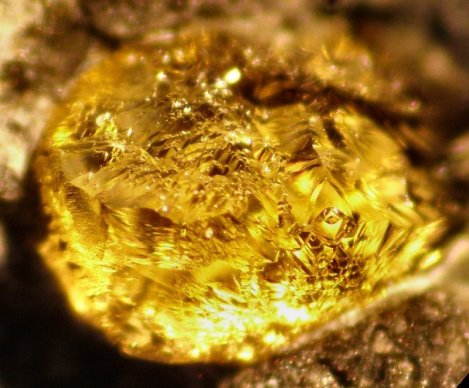 http://www.mineralatlas.com/australian_minerals/new_zealand.htm
http://www.mineralatlas.com/australian_minerals/new_zealand.htm
Origin: Blackhead Quarry, Dunedin, Otago, South Island, New Zealand Sample size: about 2 mm crystal Sample owner: Vic Cloete
Mineralogists categorize Chrysolite and Peridot under the one species: Olivine. Numerous colors are included within the clear to green ranges but the general consensus is the colors of Olivine vary from light straw yellow, gold-yellow, to yellowish-green, are known as Chrysolite ; and the deep yellow-green, is called Peridot. The chrysolite is the “golden stone” of the ancients, and was at one time considered of very great value, even more than a diamond.
Chrysolite is the seventh stone, seven is known as God’s number, and as you will see it is a division line between two important messages hidden within the structure of The New City and the city’s true meaning. Coming across some information I have yet to find again, I originally and mistakenly learned that Chrysolite was a Beryl which I have found recently to be untrue. I believe the mistake was made when confusion occurred between Chrysolite and Chrysoberyl.
This magnificent specimen photo was borrowed from: http://silver-rockets.com/tag/meteorites/ of the Fukang (meteorite); The Fukang meteorite was found in the mountains near Fukang, China in 2000. Pallasites are a type of stony-iron meteorite with beautiful olivine crystals.
CHRYSOLITE, is transparent variety of olivine. The true chrysolite of the modern mineralogist is a magnesium silicate. Certain kinds of topaz, from the Schneckenstein in Saxony, are known as Saxon chrysolite. The transparent yellow chrysoberyl with a ” brilliant” cut can and has be mistaken for a yellow diamond. This gem is also often mistaken for the chrysoberyl. The name, earlier in time was used for yellow varieties of tourmaline and topaz.
The Healing Power of Chrysolite: Said to increase strength & physical vitality and protects against nervousness. Said to protect wrist, lungs, and the upper respiratory system including the sinuses from infection, injury and illness. It is also known to protect the adrenal glands and the liver. For emotions, it helps to protect feelings of sadness caused from another, or insult and calms anger by decreasing negativity, as well as helps sleep. Psychologically to reality, it is said that the stone, similar to Peridot has the ability to make dreams a reality and attract love to its wearer. The green of the stone attracts wealth.
Chrysolite is harder than glass, but not as hard as quartz. The finest specimens are noted to come from Egypt and from Brazil. The stone is commonly found in certain volcanic rocks and as noted in the meteor photo above. Other localities where the stone can be found include, but is not limited to: Burma, Ceylon, Australia, China, Pakistan, Norway, and USA (Arizona, Colorado, Hawaii, and New Mexico). Very large crystals have been found in Myanmar and in the Minas Gerais in Brazil.
BRAZIL
http://www.bartleby.com/151/maps/br.html
Brazil covers nearly half of South America and is the continent’s largest nation. It extends 2,965 mi (4,772 km) north-south, 2,691 mi (4,331 km) east-west, and borders every nation on the continent except Chile and Ecuador. Brazil may be divided into the Brazilian Highlands, or plateau, in the south and the Amazon River Basin in the north. Over a third of Brazil is drained by the Amazon and its more than 200 tributaries.
http://www.infoplease.com/ipa/A0107357.html

Minas Gerais
El estado más grande del productor sureste y principal productor de café y de leche del país, Minas Gerais es conocida por el patrimonio de la arquitectura y el arte colonial conservado en ciudades históricas como Ouro Preto y Tiradentes. En el sur, los puntos turísticos son los ranchos hidro minerales, tales como Caxambu, das Letras de São Lourenço e São Tomé -, Monte Verde y los parques nacionales de Ibitipoca y de Aiuruoca.
http://www.gobrasil.net/hotels/ouropreto/indexSPA.shtml

Minas Gerais the third largest state in Brazil
http://tinyurl.com/28f5b7w
Religion in Brazil is remarkable both in its high adherence level compared to other Latin American countries as well as its diversity. Since 1889, when the Brazilian Constitution was set forth, Brazil ceased to have an official religion. The Constitution guarantees absolute freedom of religion. Over seventy percent of the population declared themselves Roman Catholic in the last census (2000).
However, there are many other religious denominations in Brazil. Some of these churches are the: Protestant, Pentecostal, Episcopal, Methodist, Lutheran, and Baptist. There are over a million and a half Spiritists or Kardescists who follow the doctrines of Allan Kardec. There are followers of The Church of Jesus Christ of Latter-day Saints, small minorities of Jews, Muslims, Buddhists and numerous followers of Candomble and Umbanda.
Brazilian religions are very diversified and inclined to syncretism. In recent decades there has been a great increase of Neo-Pentecostal churches, which has decreased the number of members to both the Roman Catholic Church and the Afro-Brazilian religions. About ninety percent of Brazilians declared some sort of religious affiliation in the most recent census.
http://en.wikipedia.org/wiki/Religion_in_Brazil
And for the color lovers of the world, here is an excellent site about Brazil, the culture and historical Brazilian Carnival!
http://www.colourlovers.com/blog/2008/03/11/the-colors-of-carnival-brazil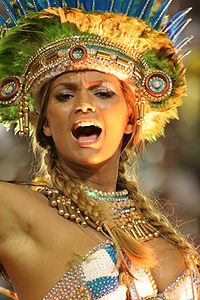
http://en.wikipedia.org/wiki/Brazilian_Carnival
The Carnival of Brazil, properly spelled “Carnaval” in Portuguese, is an annual festival in Brazil held forty days before Easter. On certain days of Lent, Roman Catholics and some other Christians traditionally abstained from the consumption of meat and poultry, hence the term “carnival,” from carnelevare, “to remove (literally, “raise”) meat.” Carnival celebrations are believed to have roots in the pagan festival of Saturnalia, which, adapted to Christianity, became a farewell to bad things in a season of religious discipline to practice repentance and prepare for Christ’s death and resurrection.
Rhythm, participation, and costumes vary from one region of Brazil to another. In the southeastern cities of Rio de Janeiro and São Paulo, organized parades led by samba schools are influenced in aesthetics by Venice Carnival. Those official parades are specific to be watched by the public, although minor parades (called blocos) allowing participation can be found in other cities. The northeastern cities of Salvador, Porto Seguro and Recife have organized groups parading through streets, and public interacts directly with them. This carnival is heavily influenced by African-Brazilian culture. Crowds follow the trio elétricos floats through the city streets. Also in northeast, Olinda carnival features unique characteristics, part influenced by Venice Carnival mixed with cultural depictions of local folklore.
Carnival is the most famous holiday in Brazil and has become an event of huge proportions. The country stops completely for almost a week and festivities are intense, day and night, mainly in coastal cities. The consumption of beer accounts for 80% of annual consumption and tourism receives 70% of annual visitors. The government distributes condoms and launches awareness campaigns at this time to prevent AIDS dissemination.
http://tinyurl.com/lu9et6

http://www.coolhunting.com/style/havaianas-summe.php
NORWAY
http://www.lonelyplanet.com/maps/europe/norway/
Norway (pronounced /ˈnɔrweɪ/ Norwegian: Norge (Bokmål), Noreg (Nynorsk) or Norga (North Sami)), officially the Kingdom of Norway, is a Nordic country in Northern Europe occupying the western portion of the Scandinavian Peninsula, as well as Jan Mayen and the Arctic archipelago of Svalbard. Norway has a total area of 385,252 square kilometres (148,747 sq mi) and a population of about 4.8 million. The majority of the country shares a border to the east with Sweden; its northernmost region is bordered by Finland to the south and Russia to the east; and Denmark lies south of its southern tip across the Skagerrak Strait. The capital city of Norway is Oslo. Norway’s extensive coastline, facing the North Atlantic Ocean and the Barents Sea, is home to its famous fjords.
http://en.wikipedia.org/wiki/Norway
For an extended period, the Norwegian art scene was dominated by artwork from Germany and Holland as well as by the influence of Copenhagen. It was in the 19th century that a truly Norwegian era began, first with portraits, later with even more impressive landscapes. Johan Christian Dahl (1788–1857), originally from the Dresden school, eventually returned to paint the landscapes of western Norway, defining Norwegian painting for the first time.
Norway’s new-found independence from Denmark encouraged painters to develop their Norwegian identity, especially with landscape painting by artists such as Kitty Kielland, a female painter who studied under Gude; Harriet Backer, 1845–1932, another pioneer among female artists, influenced by impressionism. Frits Thaulow, an impressionist, was influenced by the art scene in Paris as was Christian Krohg, a realist painter, famous for his paintings of prostitutes.
Of particular note is Edvard Munch, a symbolist/expressionist painter who became world famous for The Scream which is said to represent the anxiety of modern man.
Norwegian cuisine in its traditional form is based largely on the raw materials readily available in Norway and its mountains, wilderness and coast. It differs in many respects from its continental counterparts with a stronger focus on game and fish.
Modern Norwegian cuisine, although still strongly influenced by its traditional background, now bears the marks of globalization: Pastas, pizzas and the like are as common as meatballs and cod as staple foods, and urban restaurants sport the same selection you would expect to find in any western European city. There are many kebab and pizza stores in Norway, mainly run by Kurdish immigrants.
Kjøttkaker – meatballs: the Norwegian variety is simpler than the Swedish, and served in a brown sauce (sauce espagnol) rather than a cream-sauce. Potatoes, stewed peas or cabbage and carrots are served on the side. Many like to use a jam of lingonberries as a relish.
Svinekoteletter – pork chops: simply braised and served with potatoes and fried onions or whatever vegetables are available.
Svinestek – roasted pork: a typical Sunday dinner, served with pickled cabbage (a sweeter variety of the German sauerkraut), gravy, vegetables and potatoes.
All good cuts of meat are roasted, as in any cuisine. Side dishes vary with season and what goes with the meat. Roast leg of lamb is an Easter classic, roast beef is not very common and game is roasted for the bigger occasions.
Lapskaus – stew: resembles Irish stew, but mincemeat, sausages or indeed any meat except from fresh pork may go into the dish.
Fårikål – mutton stew: very simple preparation: cabbage and mutton is layered in a big pot along with black pepper, salt and some wheat flour to thicken the sauce, covered with water and simmered until the meat is very tender. Potatoes on the side.
Stekte pølser – fried sausages: fresh sausages are fried and served with vegetables, potatoes, peas and perhaps some gravy.
http://en.wikipedia.org/wiki/Norwegian_cuisine
- Leave a comment
- Posted under Uncategorized
12/22/2009 Beryl-Stone VIII
PLEASE NOTE THIS BLOG CONTAINS GRAPHIC IMAGES. VIEWER DISCRETION IS ADVISED.
Beryl-The Eighth Stone
Beryl is colorless and impurities are what cause various colors ranging through colorless to the deepest blue-green, nearly all translucent. Each color has a distinct name:
http://www.neweragems.net/files/fancy_color_beryl_parcel_50cts.jpg
Emerald – Green to dark green
Aquamarine – Light to dark blue, blue-green
Morganite – Pink to light purple
Golden Beryl -Golden yellow
Heliodor – Yellow, yellow-green, brown
Goshenite – Colorless to white
Red Beryl – Deep red (only comes from one locality in Utah)
Peach Beryl – Orange-pink
Green Beryl – Pale green
Emerald is the blue-green/green variety, a popular and quite expense stone nearly always flawed with impurities. Oil is applied to the stone to enhance color and form, but disguise flaws. This process should always be disclosed to the buyer as time deteriorates the oil and the flaws re-emerge. Aquamarine is known as the blue to blue-green variety. The color is lighter and also distinct from Emerald.
Morganite is a pink variety named after J.P.Morgan, the banker who is an collector. The stone is light pink yet can be enhanced with heat. Color ranges within the Morganite variety include from the lightest pink to an orange-pink. Morganite may also be called Pink or Champagne Beryl.
Goshenite is colorless and its physical properties are identical to Emerald. It is not used much as a gemstone but sometimes a green foil is used to coat the stone lending the appearance of an Emerald.
Red Beryl or Bixbite is the rarest gemstone in the world (see the blog regarding Bixbite). A rich pink to blood colored Beryl which is very rare, Only 60 pounds of dark red were said to have been mined from Utah, USA. There are other mines but produce very little output and more of a strawberry red colored stone.
Golden Beryl or Heliodorite, produces a golden yellow color. Heliodor and Golden Beryl are often confused with one another, as I confused them, collecting Golden Beryl from all over the world for Chrysolite. Some of the Beryl within the eighth foundation of the painting is Golden Beryl, Heliodor and the other yellow Beryl.
Borrowed from: http://www.peacefulmind.com/stones.htm
Properties: Beryl stones represent a group of minerals, which include aquamarine, emerald, golden or yellow beryl, heliodor and morganite, to name a few. Beryl assists its possessor in learning how to filter out distractions and unnecessary stimulation. Good for relieving stress, calming the mind. This stone works with the particular color in relation to each Chakra center. This stone is known to stimulate communication (blue), acceptance and healing (green), reawakens the love of married people (pink), supports spiritual growth (gold and white) and gives us strength and power (yellow).
Folk Remedies: Beryl has been used for centuries to help stomach, intestines, ulcers, nausea and eating disorders. It works with the mental body for exhaustion, depression and stimulates the mind, nervous system, spine and bones. Beneficial for elimination organs such as the kidneys, liver, and intestines. Helps strengthen the circulatory and pulmonary systems, making them more resistant to toxins and pollutants. Helpful to the eyes, throat and easing a stressed mental state. Beryl is often used as a sedative.
Feng Shui: Beryl stones are used in the Center area for harmony, balance and spiritual growth, in the North area for personal journey and in the Southwest area for relationships of any kind.
Suprisingly enough, before 1925 beryl was used only as a gemstone, but since then many important uses have been found for beryllium (e.g., in nuclear reactors, space vehicles, and X-ray tubes). No large deposits have been found, and most production is a by-product of the mining of feldspar and mica. Brazil is a major producer; others include Zimbabwe, South Africa, Namibia, and the U.S.
Zimbabwe
http://www.eisa.org.za/WEP/zimbabwe.htm
http://www.photos-voyages.com/zimbabwe/zambezi-victoria4-market4.html
Zimbabwe is named after Great Zimbabwe, the twelfth- to fifteenth-century stone-built capital of the Rozwi Shona dynasty. The name is thought to derive from dzimba dza mabwe (“great stone houses”) or dzimba waye (“esteemed houses”). Cultural and religious traditions among the Shona, Ndebele and smaller groups of Tonga, Shangaan and Venda have similarities in regard to marriage practices and the belief in supernatural ancestors. All those groups called on the support of the spirit world in the struggle for independence, which was achieved in 1980. European culture and values indelibly shaped the urban and rural landscapes, particularly in terms of the use of space, and the structure and practice of government. Black Zimbabweans have assimilated more white Zimbabwean culture than vice versa. In these distinct cultures, which generally are referred to as African and European, the most obvious differences are economic. While the white minority lost political power after Independence, it has retained a disproportionate share of economic resources.
Read more: Culture of Zimbabwe – traditional, history, people, traditions, women, beliefs, food, customs, family, social, marriage, men, life, population, religion, rituals, History and ethnic relations http://www.everyculture.com/To-Z/Zimbabwe.html#ixzz0mjM0lKv2
http://www.everyculture.com/To-Z/Zimbabwe.html
http://en.wikipedia.org/wiki/Zimbabwe
PLEASE NOTE THIS BLOG CONTAINS GRAPHIC IMAGES. VIEWER DISCRETION IS ADVISED.
The Second Congo War, also known as Africa’s World War and the Great War of Africa, began in August 1998 in the Democratic Republic of the Congo (formerly called Zaire), and officially ended in July 2003 when the Transitional Government of the Democratic Republic of the Congo took power (though hostilities continue to this day). The largest war in modern African history, it directly involved eight African nations, as well as about 25 armed groups.
By 2008 the war and its aftermath had killed 5.4 million people, mostly from disease and starvation, making the Second Congo War the deadliest conflict worldwide since World War II. Millions more were displaced from their homes or sought asylum in neighboring countries. Despite a formal end to the war in July 2003 and an agreement by the former belligerents to create a government of national unity, 1,000 people died daily in 2004 from easily preventable cases of malnutrition and disease.
http://en.wikipedia.org/wiki/Second_Congo_War
http://www.cbc.ca/health/story/2006/02/22/unicef-death060222.html
http://www.miafarrow.org/index_old_01.html
http://www.uhurunews.com/search?topic=economy&about_worldregion=&language=en&doquery=1
http://black-african-woman.blogspot.com/2008_03_01_archive.html
Please don’t miss Peter Oborne’s magnificent piece on Zimbabwe in today’s Daily Mail.
PLEASE NOTE THIS BLOG CONTAINS GRAPHIC IMAGES. VIEWER DISCRETION IS ADVISED.
Peter has covered the tragedy of that country with necessary relentlessness and courage. His great fear is that the rest of us are forgetting Zimbabwe:
The world’s attention has shifted away.
Now, with the focus no longer on him, Mugabe is free to continue this unprecedented campaign of electoral cleansing.
For the past week, having slipped into Zimbabwe as a businessman, I have seen the relentless increase in intimidation from government forces.
I can report that every day it is reaching a new level of intensity, sweeping like a killer virus through the country.
Even by Mugabe’s standards, the scale and brutality is horrifying.
He is right. Our attention mustn’t wander until Mugabe and his thugs are gone.
Posted by Daniel Finkelstein
http://timesonline.typepad.com/comment/2008/05/please-dont-mis.html
What can you do to help?
http://www.zimbabwesituation.com/
http://en.wikipedia.org/wiki/H.E.L.P._Zimbabwe
http://www.helpinternational.co.uk/
http://allafrica.com/stories/201004090818.html
This should get you started, but once you start never stop until this tyranny is over! Profound inspiration exist in a world not so very far from your own.
Nostradamus
Michel de Nostredame (14 December or 21 December 1503 – 2 July 1566), usually Latinised to Nostradamus, was a French apothecary and reputed seer who published collections of prophecies that have since become famous worldwide. He is best known for his book Les Propheties (“The Prophecies”), the first edition of which appeared in 1555. Since the publication of this book, which has rarely been out of print since his death, Nostradamus has attracted a following that, along with the popular press, credits him with predicting many major world events. The prophecies have in some cases been assimilated to the results of applying the alleged Bible code, as well as to other purported prophetic works.
Most academic sources maintain that the associations made between world events and Nostradamus’s quatrains are largely the result of misinterpretations or mistranslations (sometimes deliberate) or else are so tenuous as to render them useless as evidence of any genuine predictive power. Moreover, none of the sources listed offers any evidence that anyone has ever interpreted any of Nostradamus’s quatrains specifically enough to allow a clear identification of any event in advance.
http://en.wikipedia.org/wiki/Nostradamus
Scrying (also called crystal gazing, crystal seeing, seeing, or peeping) is a magic practice that involves seeing things psychically in a medium, usually for purposes of obtaining spiritual visions and more rarely for purposes of divination or fortune-telling. The media used are most commonly reflective, translucent, or luminescent substances such as crystals, stones, glass, mirrors, water, fire, or smoke. Scrying has been used in many cultures as a means of divining the past, present, or future. Depending on the culture and practice, the visions that come when one stares into the media are thought to come from God, spirits, the psychic mind, the devil, or the subconscious.
Although scrying is most commonly done with a crystal ball, it may also be performed using any smooth surface, such as a bowl of liquid, a pond, or a crystal.
Scrying is actively used by many cultures and belief systems and is not limited to one tradition or ideology. As of 2009[update], the Ganzfeld experiment, a sensory deprivation experiment inspired by scrying, provides the best known evidence for psi abilities in the laboratory. Nevertheless, like other aspects of divination and parapsychology, scrying is not supported by mainstream science as a method of predicting the future or otherwise seeing events that are not physically observable.
http://en.wikipedia.org/wiki/Scrying
For those of you with the big, beautiful “blood diamonds”, now that you have learned how to gaze into it, look once again and see…
In March 1993 Carter made a trip to southern Sudan. The sound of soft, high-pitched whimpering near the village of Ayod attracted Carter to an emaciated Sudanese toddler. The girl had stopped to rest while struggling to a feeding center, whereupon a vulture had landed nearby. He said that he waited about 20 minutes, hoping that the vulture would spread its wings. It didn’t. Carter snapped the haunting photograph and chased the vulture away.
The photograph was sold to The New York Times where it appeared for the first time on March 26, 1993. Practically overnight hundreds of people contacted the newspaper to ask whether the child had survived, leading the newspaper to run a special editor’s note saying the girl had enough strength to walk away from the vulture, but that her ultimate fate was unknown.
On April 2, 1994 Nancy Buirski, a foreign New York Times picture editor, phoned Carter to inform him he had won the most coveted prize for photojournalism. Carter was awarded the Pulitzer Prize for Feature Photography on May 23, 1994 at Columbia University‘s Low Memorial Library.
On 27 July 1994 Carter drove to the Braamfonteinspruit river, near the Field and Study Centre, an area where he used to play as a child, and took his own life by taping one end of a hose to his pickup truck’s exhaust pipe and running the other end to the passenger-side window. He died of carbon monoxide poisoning at the age of 33. Portions of Carter’s suicide note read:
-
“I am depressed … without phone … money for rent … money for child support … money for debts … money!!! … I am haunted by the vivid memories of killings and corpses and anger and pain … of starving or wounded children, of trigger-happy madmen, often police, of killer executioners…I have gone to join Ken if I am that lucky.”
-
http://en.wikipedia.org/wiki/Kevin_Carter
UNITED STATES
The Star Spangled Banner Lyrics
By Francis Scott Key 1814

Oh, say can you see by the dawn’s early light
What so proudly we hailed at the twilight’s last gleaming?
Whose broad stripes and bright stars thru the perilous fight,
O’er the ramparts we watched were so gallantly streaming?
And the rocket’s red glare, the bombs bursting in air,
Gave proof through the night that our flag was still there.
Oh, say does that star-spangled banner yet wave
O’er the land of the free and the home of the brave?
On the shore, dimly seen through the mists of the deep,
Where the foe’s haughty host in dread silence reposes,
What is that which the breeze, o’er the towering steep,
As it fitfully blows, half conceals, half discloses?
Now it catches the gleam of the morning’s first beam,
In full glory reflected now shines in the stream:
‘Tis the star-spangled banner! Oh long may it wave
O’er the land of the free and the home of the brave!
Where the foe’s haughty host in dread silence reposes,
What is that which the breeze, o’er the towering steep,
As it fitfully blows, half conceals, half discloses?
Now it catches the gleam of the morning’s first beam,
In full glory reflected now shines in the stream:
‘Tis the star-spangled banner! Oh long may it wave
O’er the land of the free and the home of the brave!
And where is that band who so vauntingly swore
That the havoc of war and the battle’s confusion,
A home and a country should leave us no more!
Their blood has washed out their foul footsteps’ pollution.
No refuge could save the hireling and slave
From the terror of flight, or the gloom of the grave:
And the star-spangled banner in triumph doth wave
O’er the land of the free and the home of the brave!
Oh! thus be it ever, when freemen shall stand
Between their loved home and the war’s desolation!
Blest with victory and peace, may the heav’n rescued land
Praise the Power that hath made and preserved us a nation.
Then conquer we must, when our cause it is just,
And this be our motto: “In God is our trust.”
And the star-spangled banner in triumph shall wave
O’er the land of the free and the home of the brave!
http://www.usa-flag-site.org/song-lyrics/star-spangled-banner.shtml
What America was v.s What America has Become
The development of the Culture of the United States of America has been marked by a tension between two strong sources of inspiration: European ideals, especially British; and domestic originality.
American culture encompasses traditions, ideals, customs, beliefs, values, arts, and innovations developed both domestically and imported via British colonization and immigration. Prevalent ideas and ideals which evolved domestically such as important national holidays, uniquely American sports, proud military tradition, and innovations in the arts and entertainment give a strong sense of national pride among the population as a whole.
It includes both conservative and liberal elements, military and scientific competitiveness, political structures, risk taking and free expression, materialist and moral elements.
It also includes elements which evolved from Native Americans, and other ethnic subcultures; most prominently the culture of African American slave descendants and different cultures from Latin America. Many cultural elements, especially popular culture have been exported across the globe through modern mass media where American culture is sometimes resented.
http://en.wikipedia.org/wiki/Culture_of_the_United_States
Remember that cover photo of Barack Obama on Rolling Stone, the magazine that, uh, endorsed his candidacy for president? And remember that cover photo of Michelle Obama on Vogue, the magazine that has endorsed the First Lady’s look? The Obamas made a little money for their girls’ new school, the private Sidwell Friends School in Washington — where tuition runs $28,442 in the lower grades and $29,442 in the upper grades — with some autographs for a school benefit the other night. http://tinyurl.com/22vrjuh
http://tinyurl.com/ypub3w
1. Will Smith – $80 million
2. Johnny Depp – $72 million
3. Eddie Murphy – $55 million
3. Mike Myers – $55 million
5. Leonardo DiCaprio – $45 million
6. Bruce Willis – $41 million
7. Ben Stiller – $40 million
8. Nicolas Cage – $31 million
9. Will Ferrell – $31 million
10. Adam Sandler – $30 million
http://search.hollywood.com/movies/Highest%20Paid%20Actor
http://elitechoice.org/category/ring/
First place on the Forbes list: Stock exchange guru Warren Buffet (77). The American investor’s fortune has risen to 62 billion US dollars, making him the richest man in the world.
http://tinyurl.com/29s3lcl
Somehow I just knew that searching Warren Buffet and Diamonds would show the truth of blood money and would bring me here:
A Message from Warren E. Buffett
Chairman, Berkshire Hathaway Inc.
What You Should Know About the Jewelry Business
 You don’t need to understand the economics of a generating plant in order to intelligently buy electricity. If your neighbor is an expert on that subject and you are a neophyte, your electric rates will be identical.
You don’t need to understand the economics of a generating plant in order to intelligently buy electricity. If your neighbor is an expert on that subject and you are a neophyte, your electric rates will be identical.
But jewelry purchases are different. What you pay for an item vs. what your neighbor pays for a comparable item can be, and often is, widely different. Understanding the economics of the business will tell you why.
To begin with, all jewelers turn their inventory very slowly, and that ties up a lot of capital. A once-a-year turn is par for the course. The reason is simple: People buy jewelry infrequently, and when they do, they are making both a major and very individual purchase. Therefore, they want to view a wide selection of pieces before zeroing in on a single item.
Given that their turnover is low, a jeweler must obtain a relatively wide profit margin on sales in order to achieve even a mediocre return on their investment. In this respect, the jewelry business is just the opposite of the grocery business, in which rapid turnover of inventory allows good returns on investment though profit margins are low.
In order to establish a selling price for their merchandise, a jeweler must add to the price they pay for that merchandise, both their operating costs and desired profit margin. Operating costs seldom run less than 40% of sales and often exceed that level. This fact requires most jewelers to price their merchandise at double its cost to them or even more. The math is simple: Jewelers charge $1 for merchandise that has cost them 50 cents. Then, from their gross profit of 50 cents they typically pay 40 cents for operating costs, which leaves 10 cents of pre-tax earnings for every $1 of sales. Taking into account the massive investment in inventory, the 10-cent profit is adequate but far from exciting.
At Borsheim’s the equation is far different from what I have just described. Because of our single location and the huge volume we generate, our operating expense ratio is usually around 20% of sales. As a percentage of sales, our rent costs alone are fully five points below those of our typical competitor. Therefore, we can, and do, price our goods far below the prices charged by other jewelers. In fact, if they priced to match us, they would operate at very substantial losses. Moreover, in a virtuous circle, our low prices generate ever increasing sales, further driving down our expense ratio, which allows us to reduce prices still more.
How much difference does our cost advantage make? It varies by competitor but, by my calculation, what costs you $1,000 at Borsheim’s will, on average, cost you about $1,350 elsewhere. This is called the “Borsheim’s Price”. There are very few instances where we are unable to offer you those great savings due to restrictions, but you will always know upfront if an item is non-discountable.
Of course, price means nothing unless you are sure of the quality of what you are getting. When products are branded, such as watches and chinaware are, comparisons are simple. But jewelry is usually a “blind” item – and that puts virtually all purchasers at the mercy of the seller.
I can remember well how helpless I used to feel in a Fifth Avenue or Rodeo Drive jewelry store, where the only thing I knew for sure was that the operator had extraordinarily high overhead – and that they had to cover it in their sales price. I was also wary of the “upstairs” solo operator who operated on consignment merchandise, since that would have cost them more than merchandise bought outright, and would necessarily have inflated their retail price. And, finally, I always worried about the quality of what I was getting I couldn’t tell the difference between an emerald or a diamond worth $10,000 and one whose value was $100,000. (I still can’t.)
My sense of helplessness led me to an obvious conclusion: “If you don’t know jewelry, know your jeweler.” For that reason, I made all of my jewelry purchases at Borsheim’s for many years before Berkshire Hathaway bought the company. I didn’t know stones, but I did know Ike Friedman, the retailing genius who had built the business from nothing into one of the nation’s largest independent jewelry stores. When I purchased Ike’s business, I did it without an audit but with full confidence that I was getting value received. And that’s just what I got – precisely as I had when I purchased a single piece of jewelry from him.
The main point of this letter is to tell you that you don’t have to live near Omaha to benefit from Borsheim’s. Our “shop-at-home” program brings Borsheim’s to our qualified customers. Simply contact Borsheim’s to describe what you’re looking for – to any degree of detail. We will assemble selections that best reflect your wishes and send them to you. Then, in the comfort of your own home or office, you can conveniently and leisurely select the item(s) you most prefer, or return the entire selection.
Our results from this “shop-at-home” program have been amazing. Customers have loved it and keep coming back for more. Each year, we send out several thousand packages, ranging in value from $100 to $500,000. Call us at 800-642-GIFT (4438) to learn how to qualify for Borsheim’s “shop-at-home” program.
At Borsheim’s the service will be exemplary, the price will be exceptional and the merchandise will always be what you are told that it is. You have my word.

Warren E. Buffett
Chairman of the Board
Oddly enough his “word” does not mention the countless lives lost for profit-his profit. What is the amount paid to the people of Africa? You see the sub-standard life and how the people live on the edge of death EVERYDAY. Now that you have seen the truth, does this letter to you from the richest man in the world mean anything?
Key words: neighbor, economics, respect, helpless, wary, worried, and most of all helplessness. Subliminal use of conscience? Do you think he saw what Kevin Carter saw and what we see now?
As “rich” as the man is, is as poor as the poorest man on earth. Neither take with them that which is in their hand, they take that which is in their hearts and what they leave behind in the hearts of others. The rich man will leave this earth with less than the poor man for he has not learned of life, only money and greed. The poor man will leave this earth “rich” in its truest form for he has learned the humbleness of life.
- 2 comments
- Posted under BERYL, Uncategorized
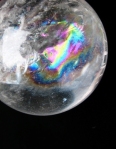
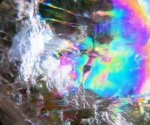
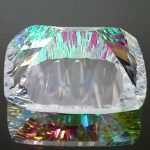
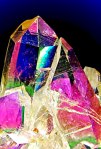
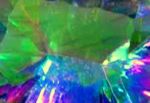
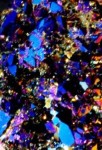
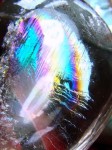
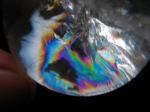
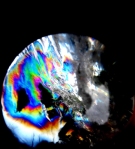
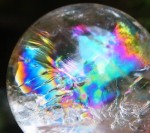
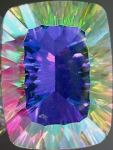



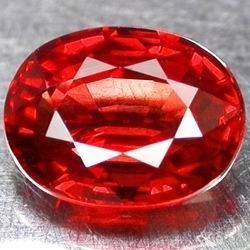





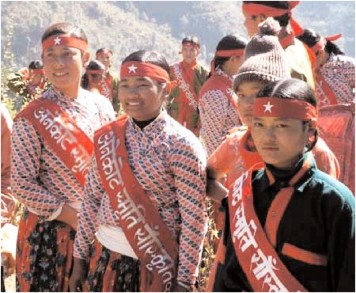
















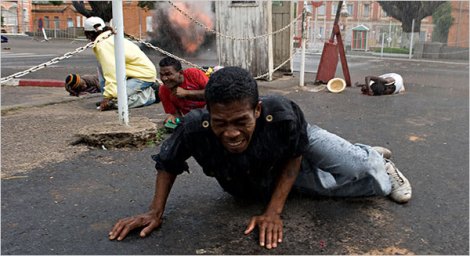
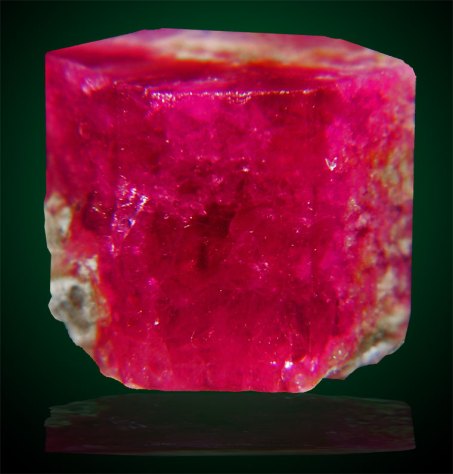
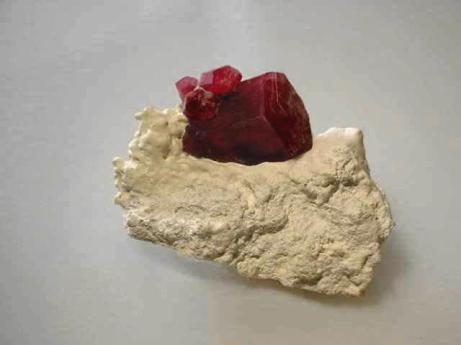
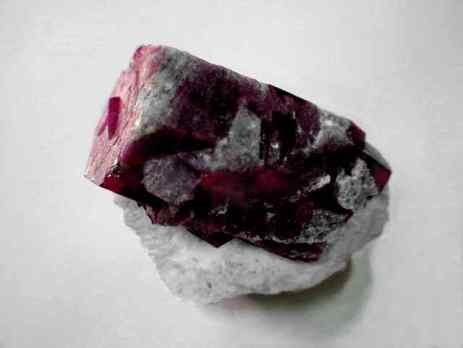




















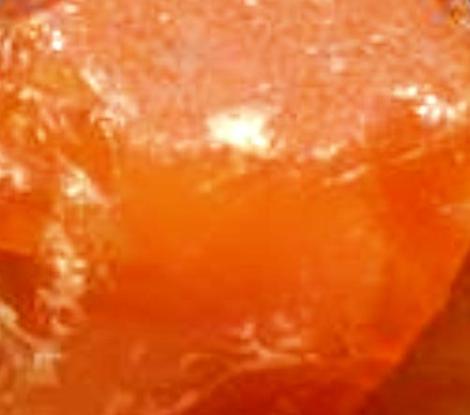
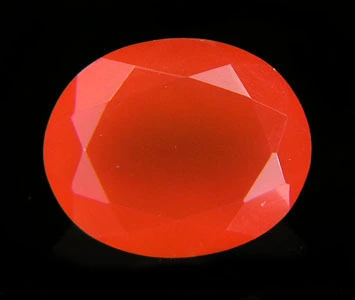
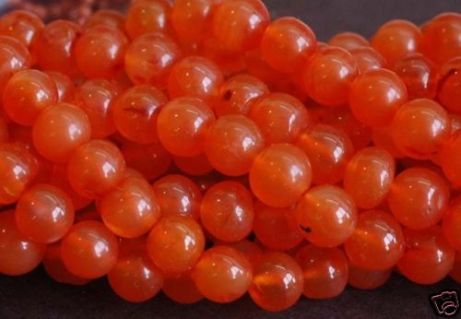

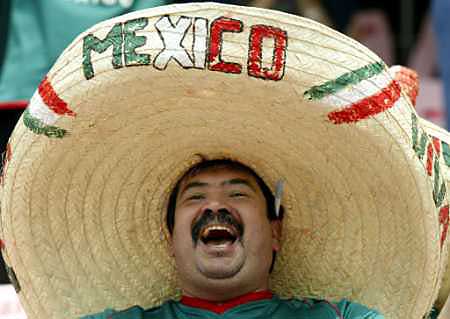







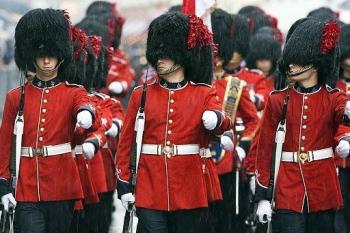
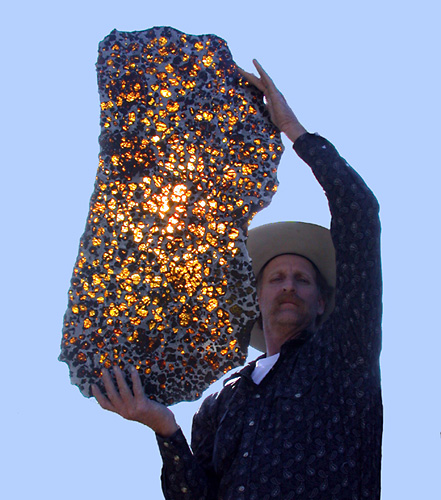
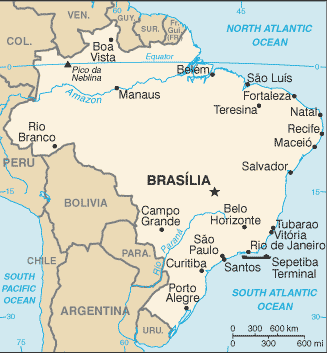
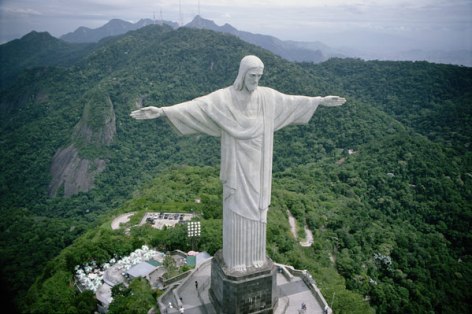

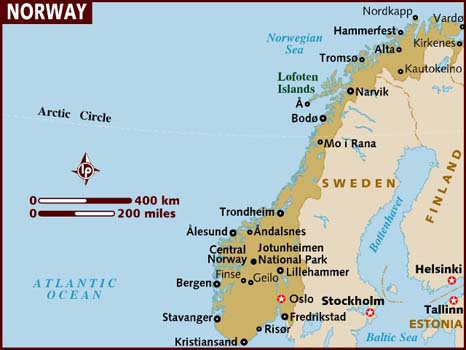
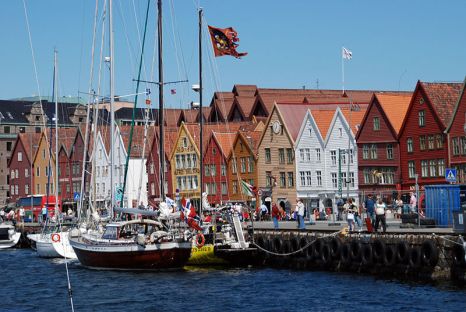
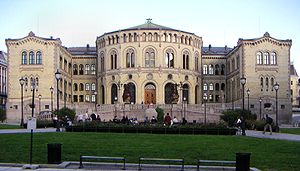
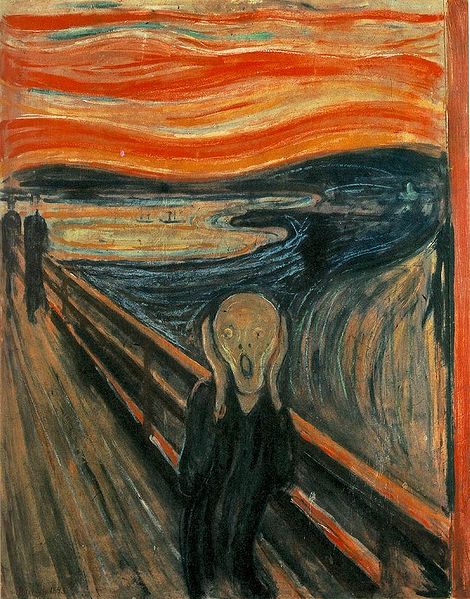





![[Photo Women chatting on Victoria falls market]](https://i0.wp.com/www.photos-voyages.com/zimbabwe/habitants/habitants_large03.jpg)






